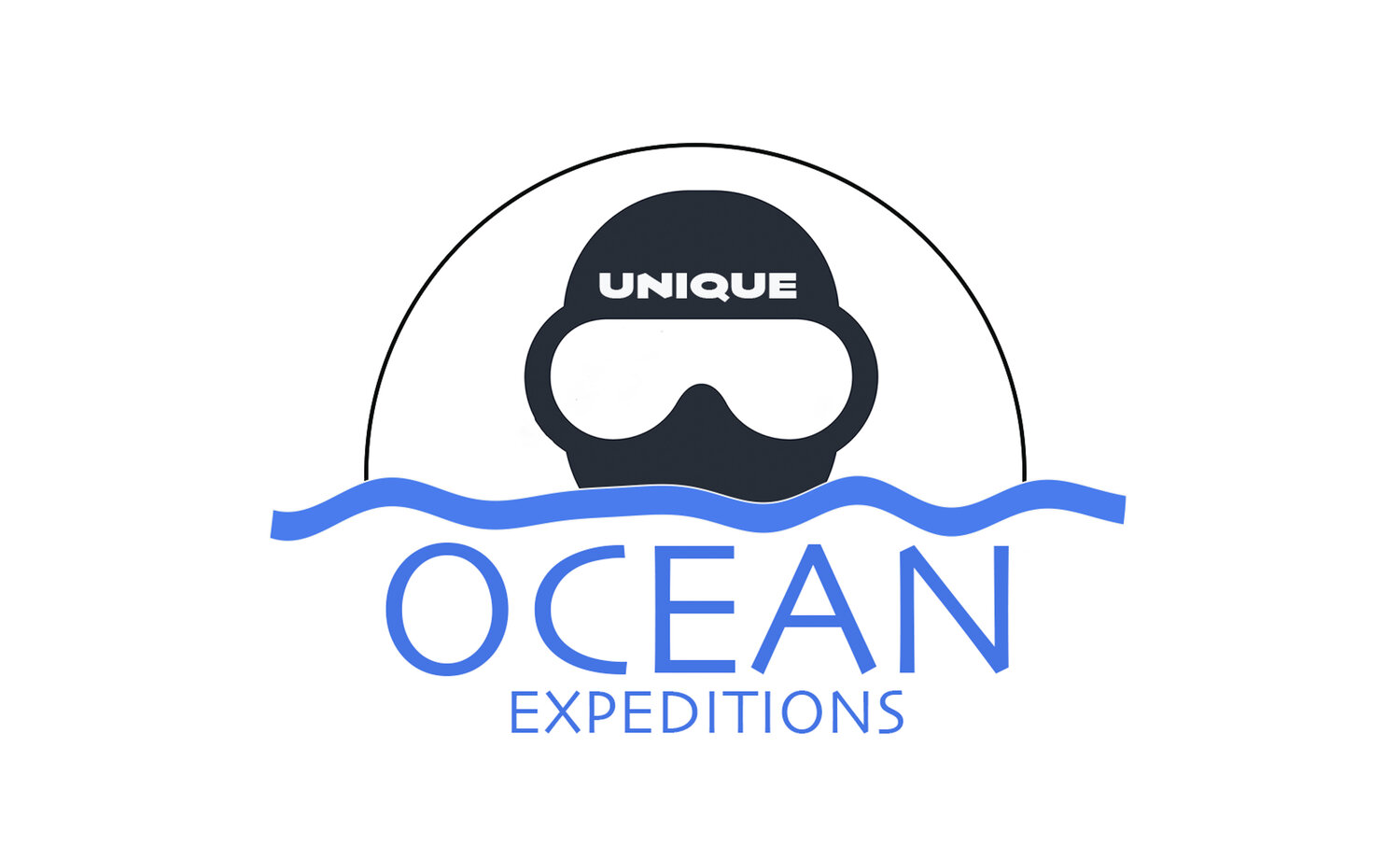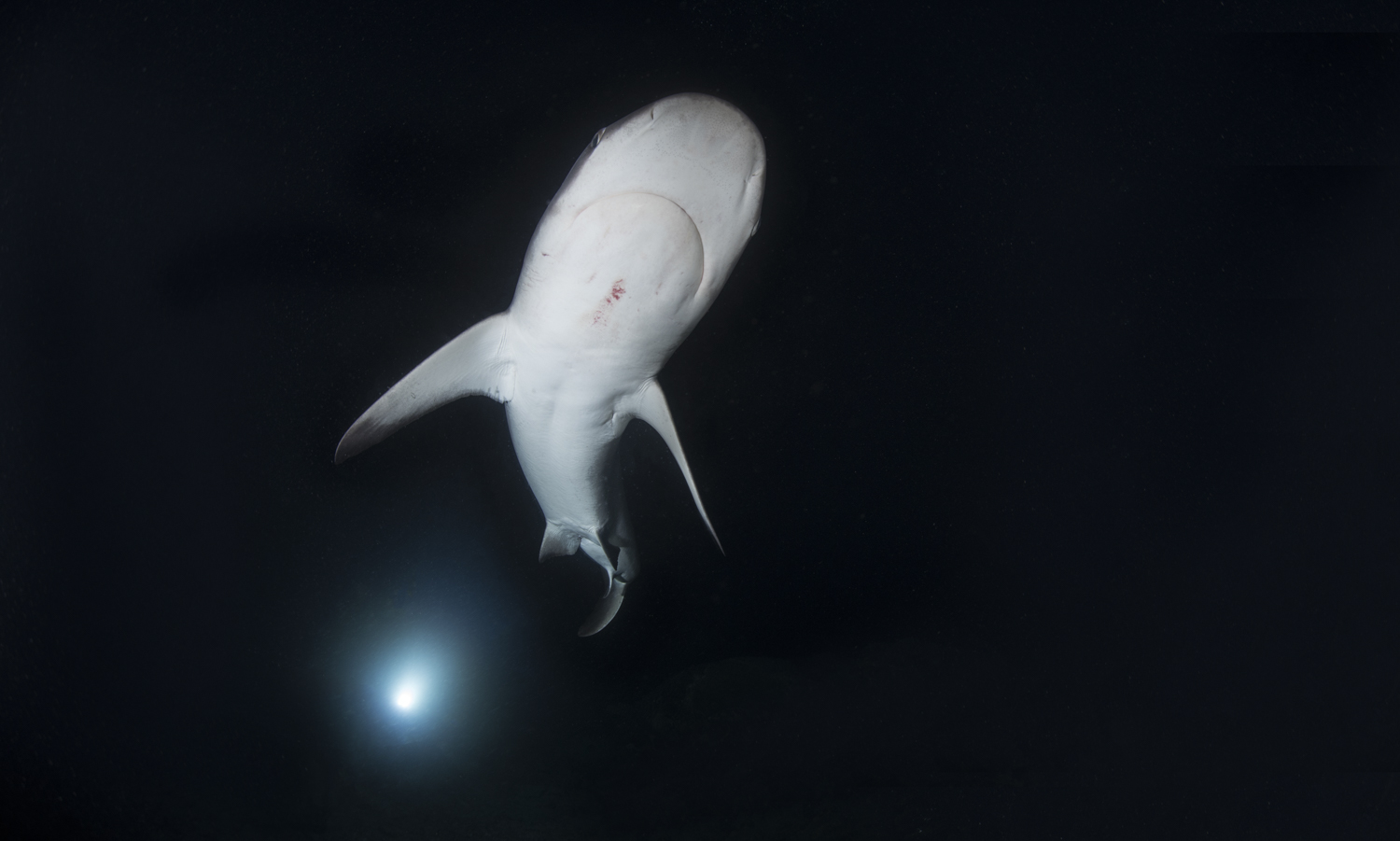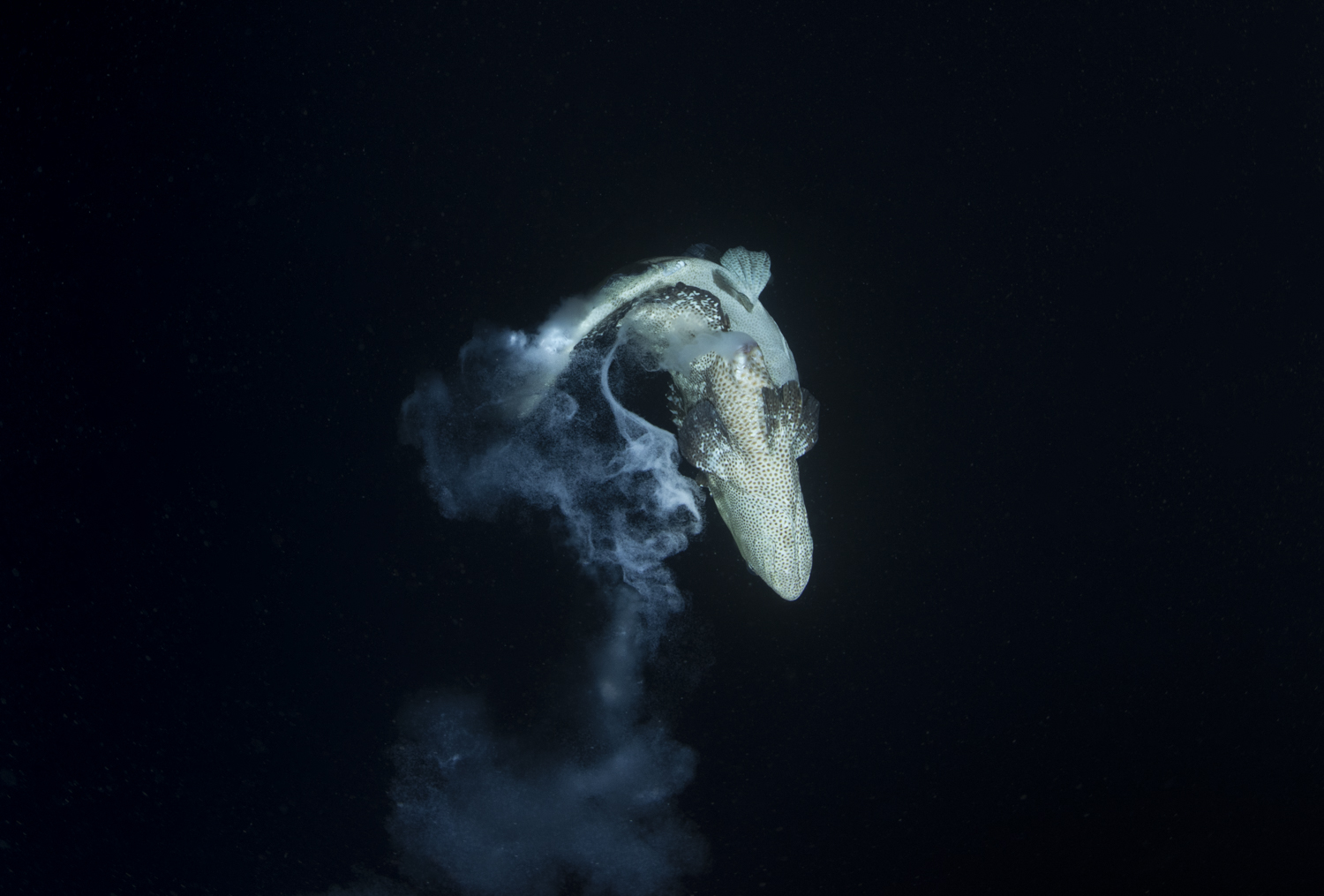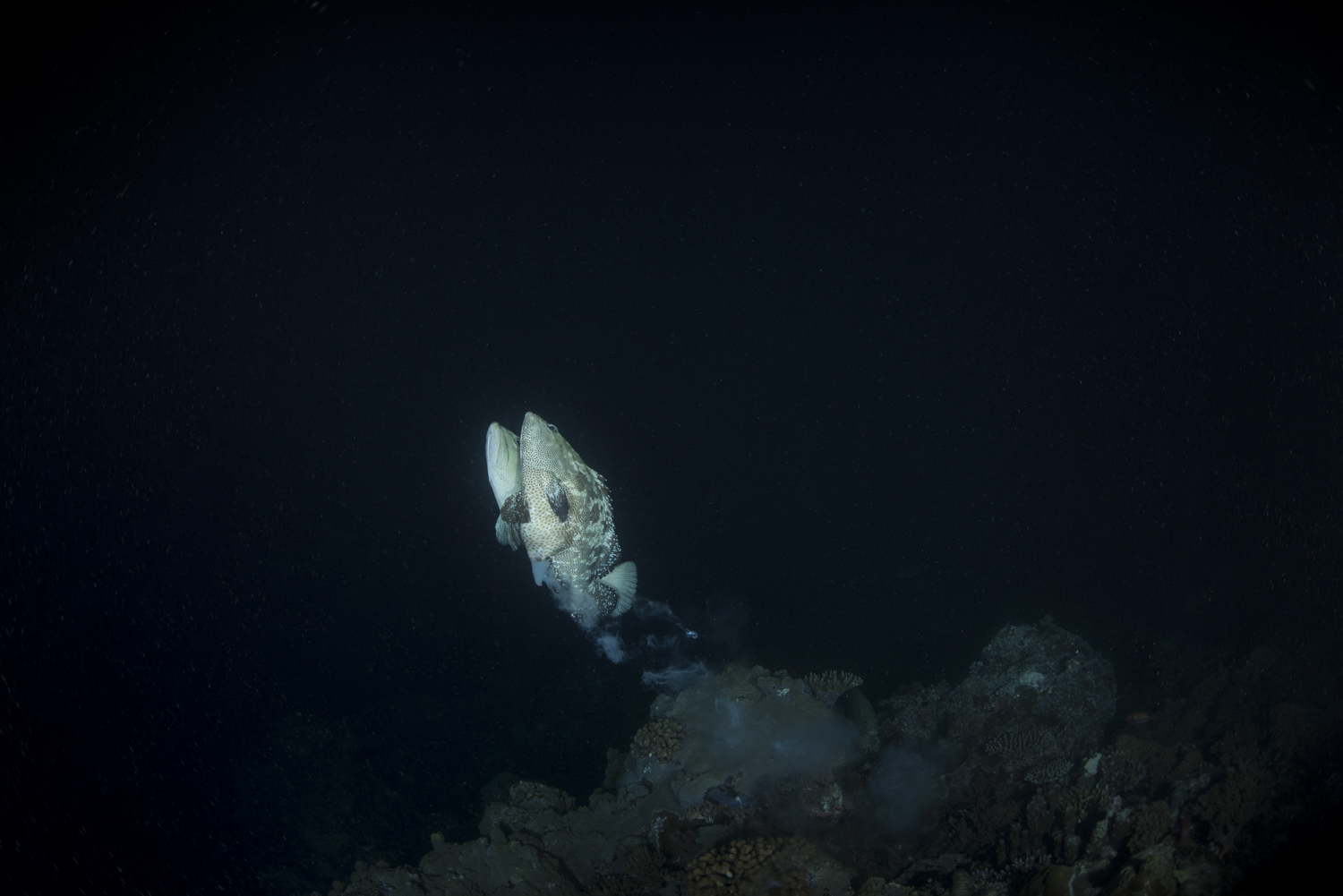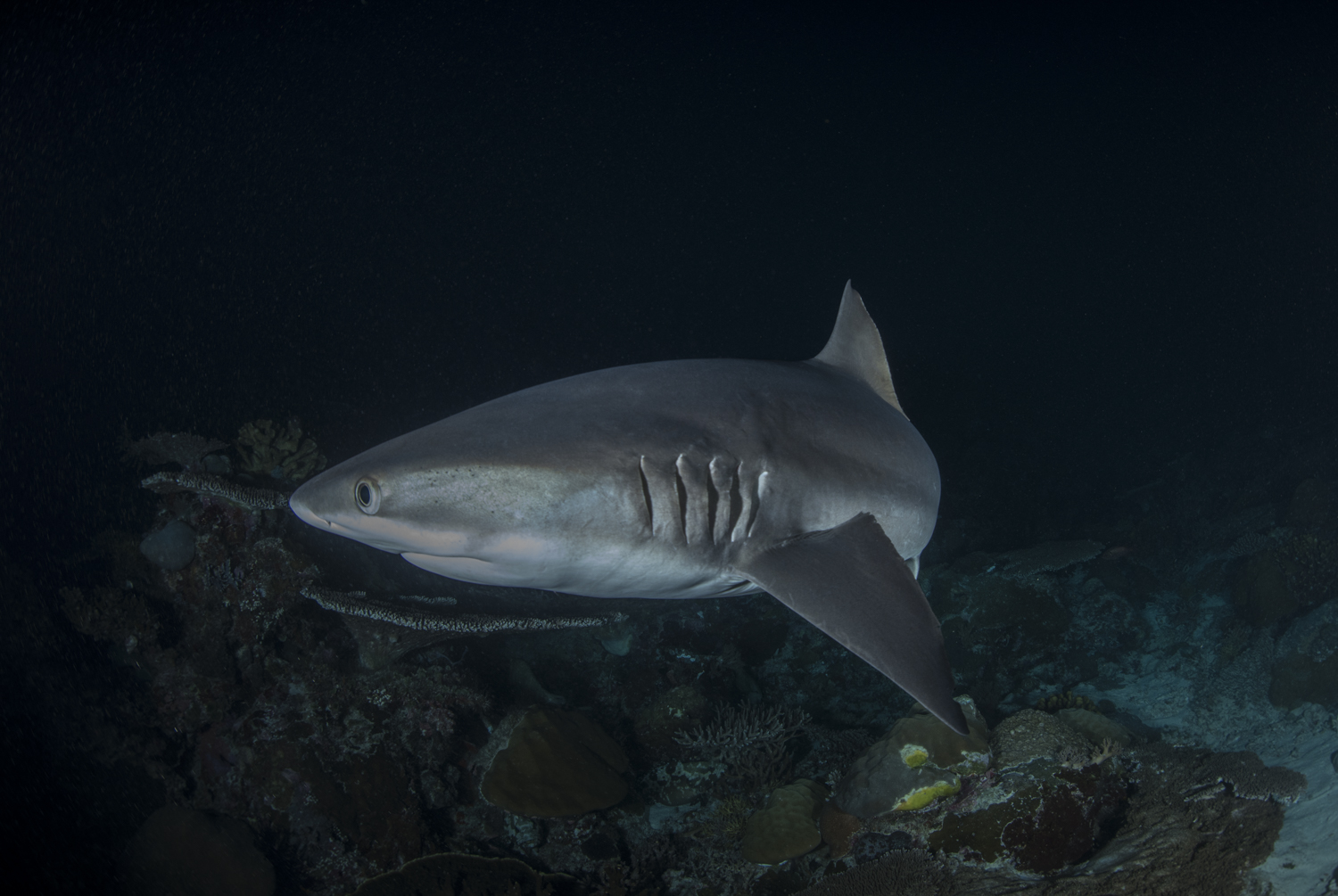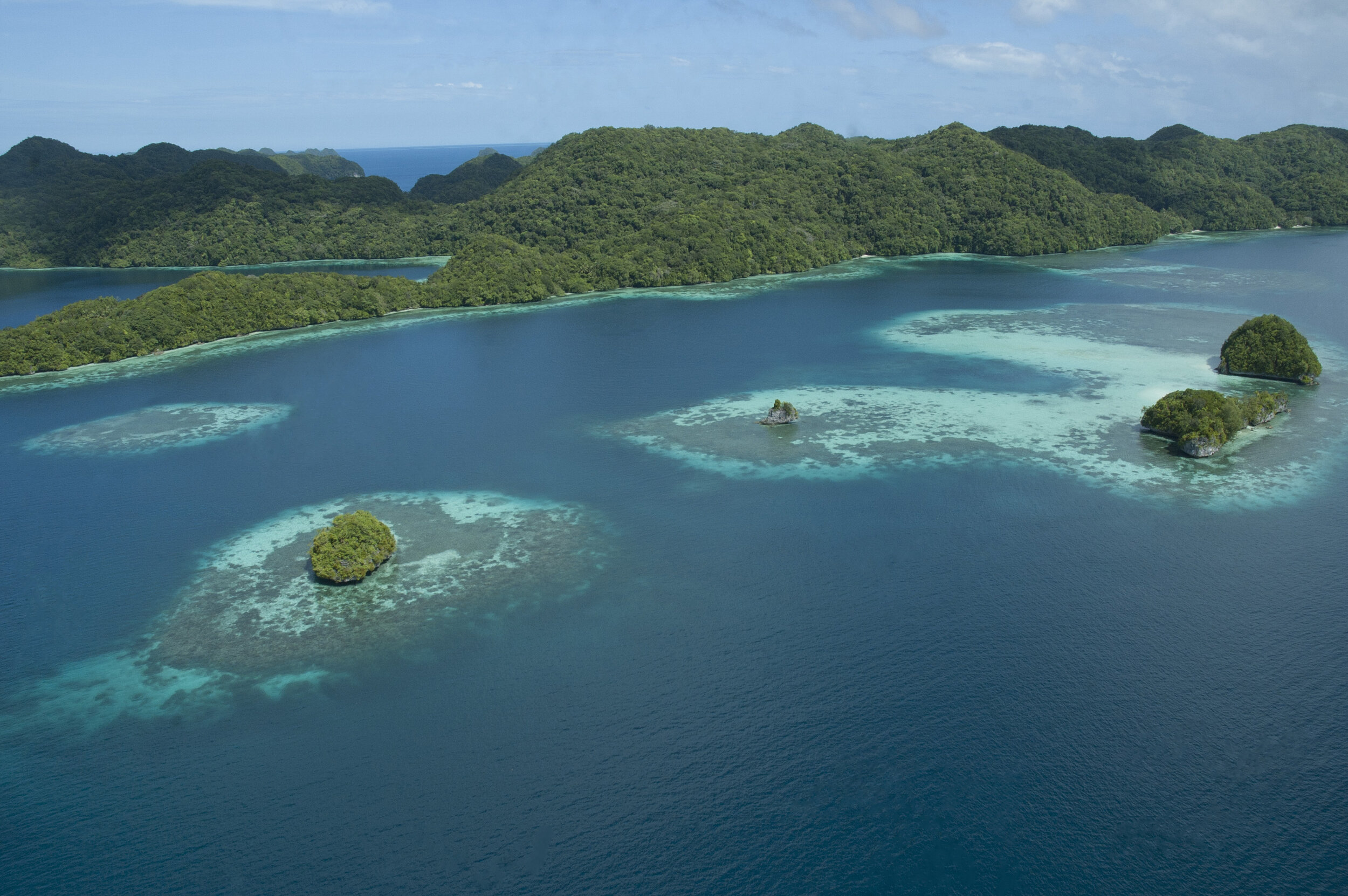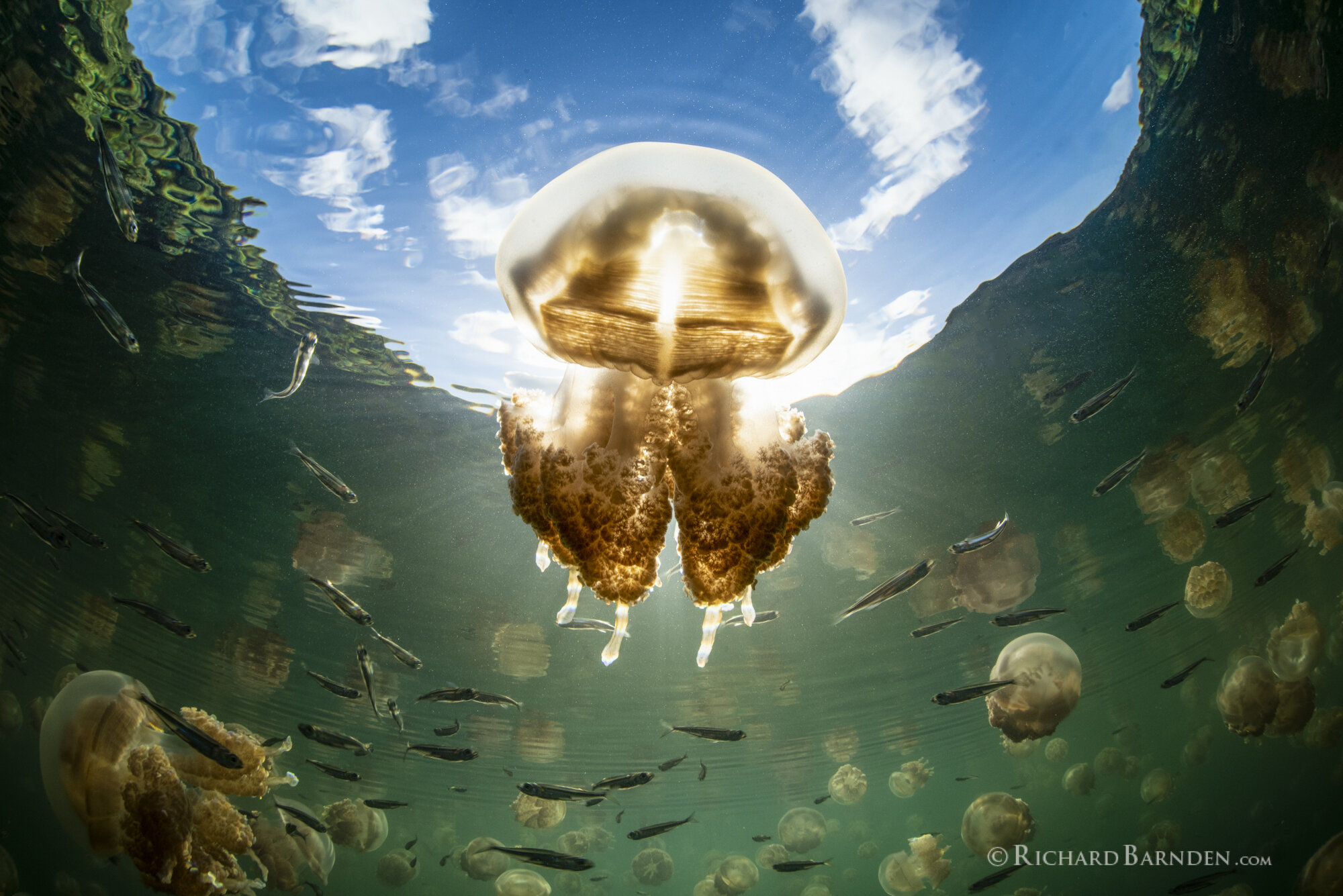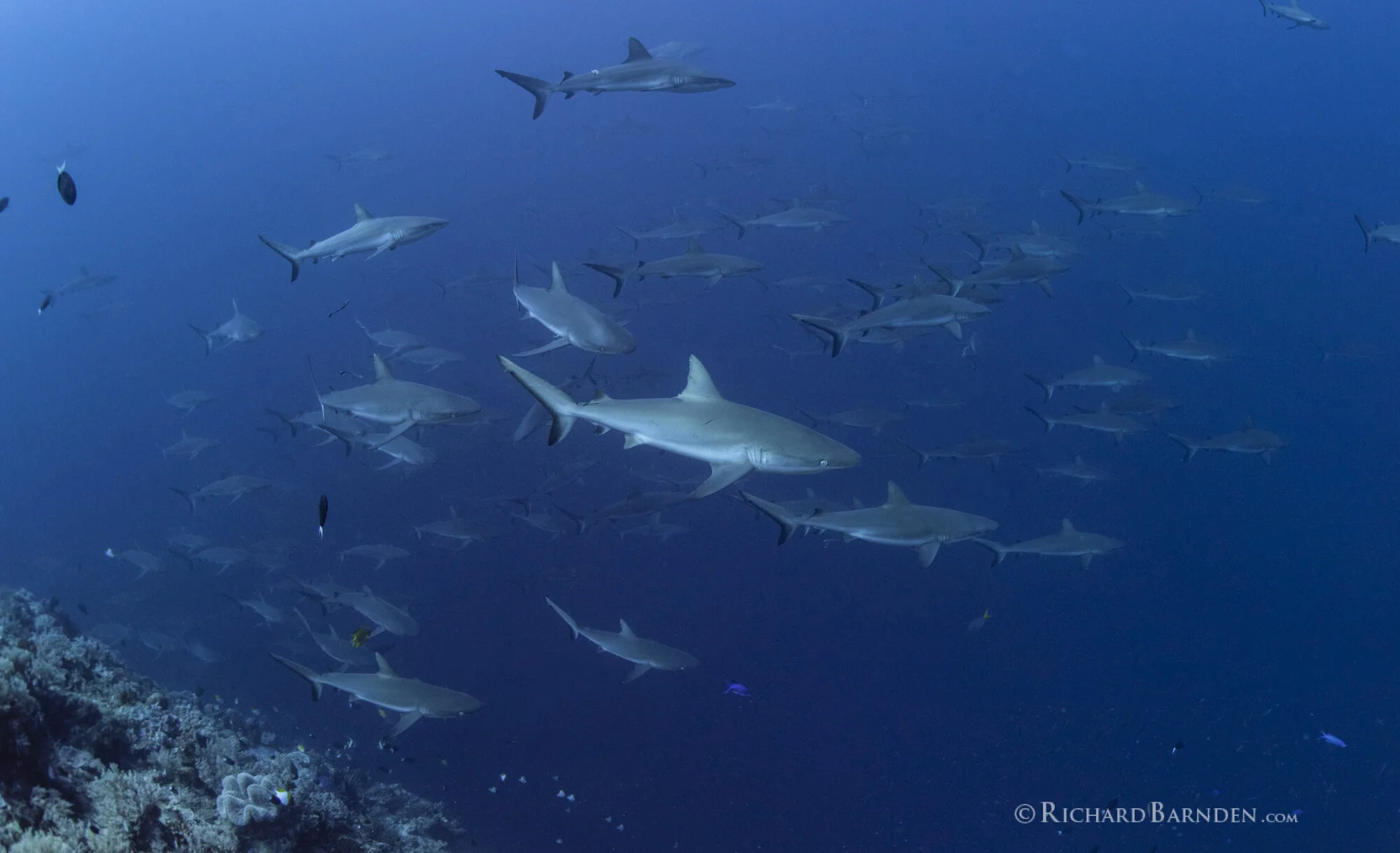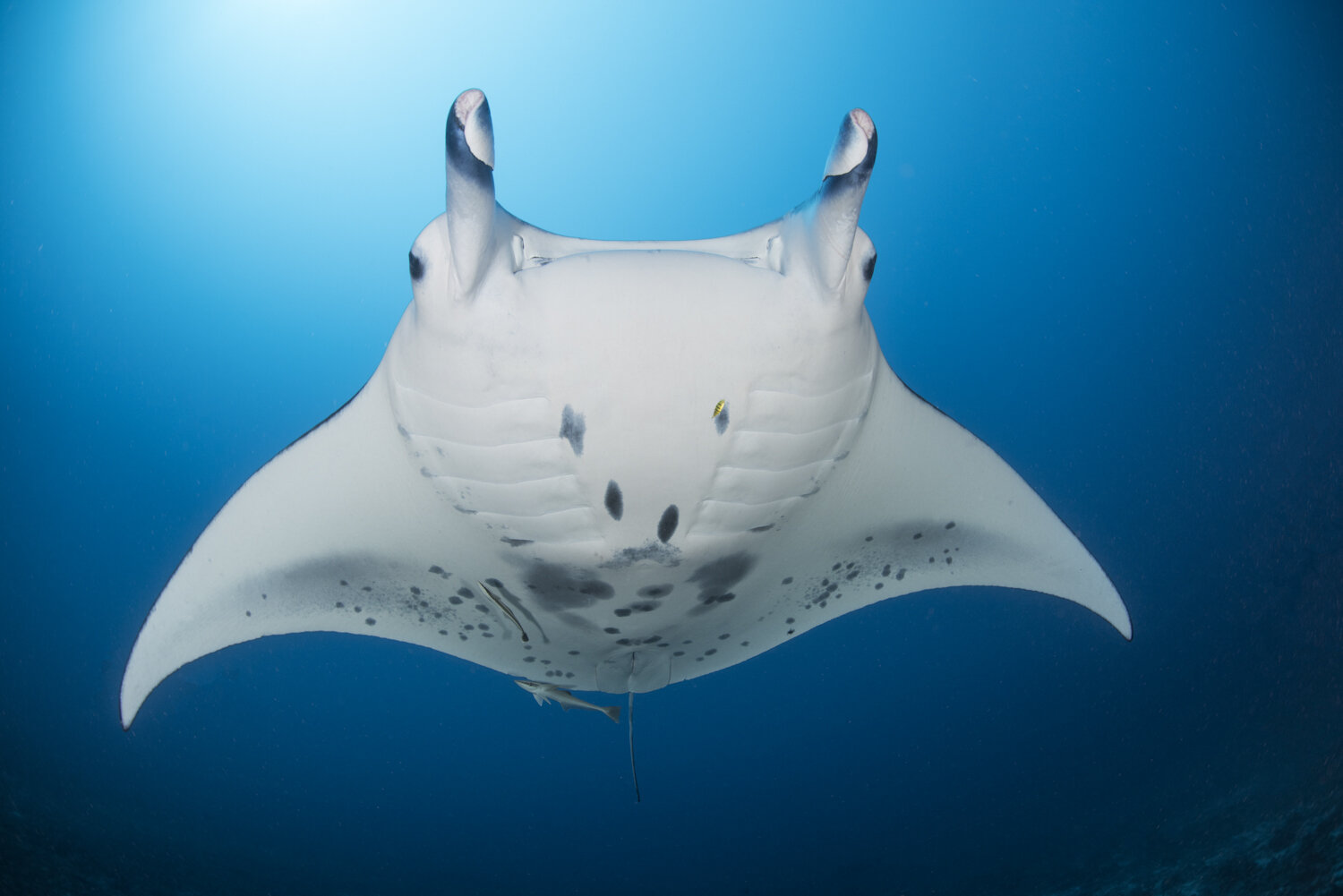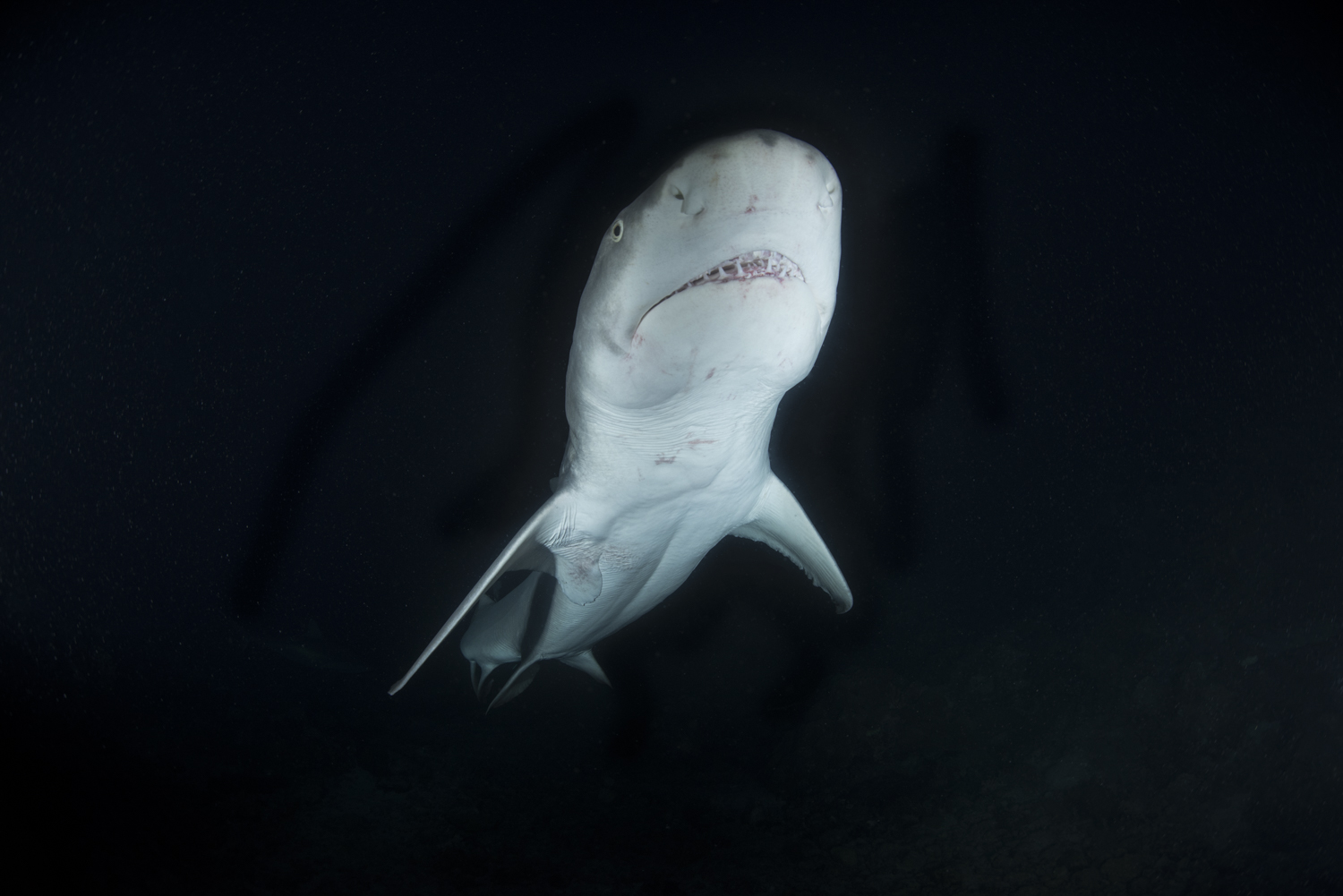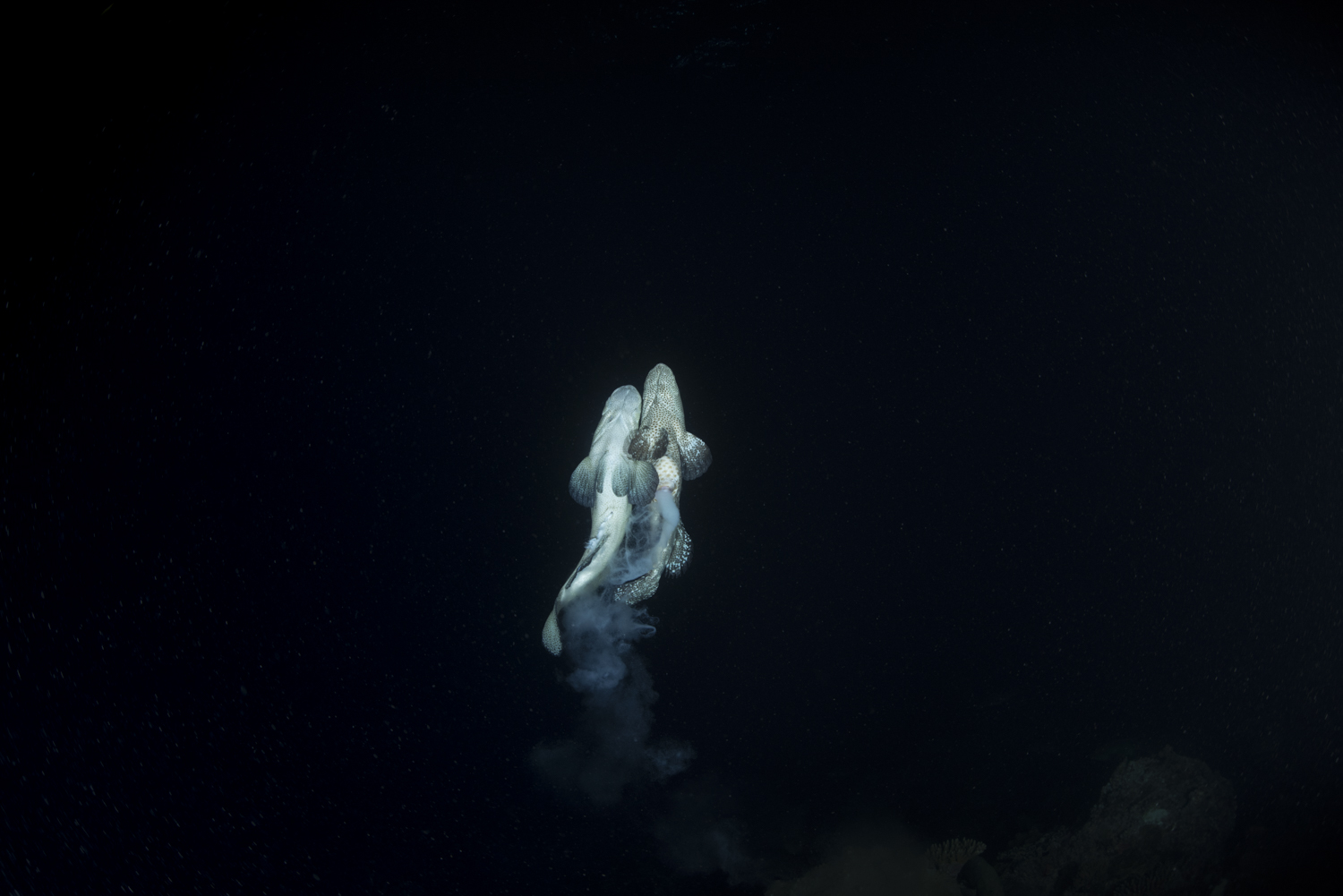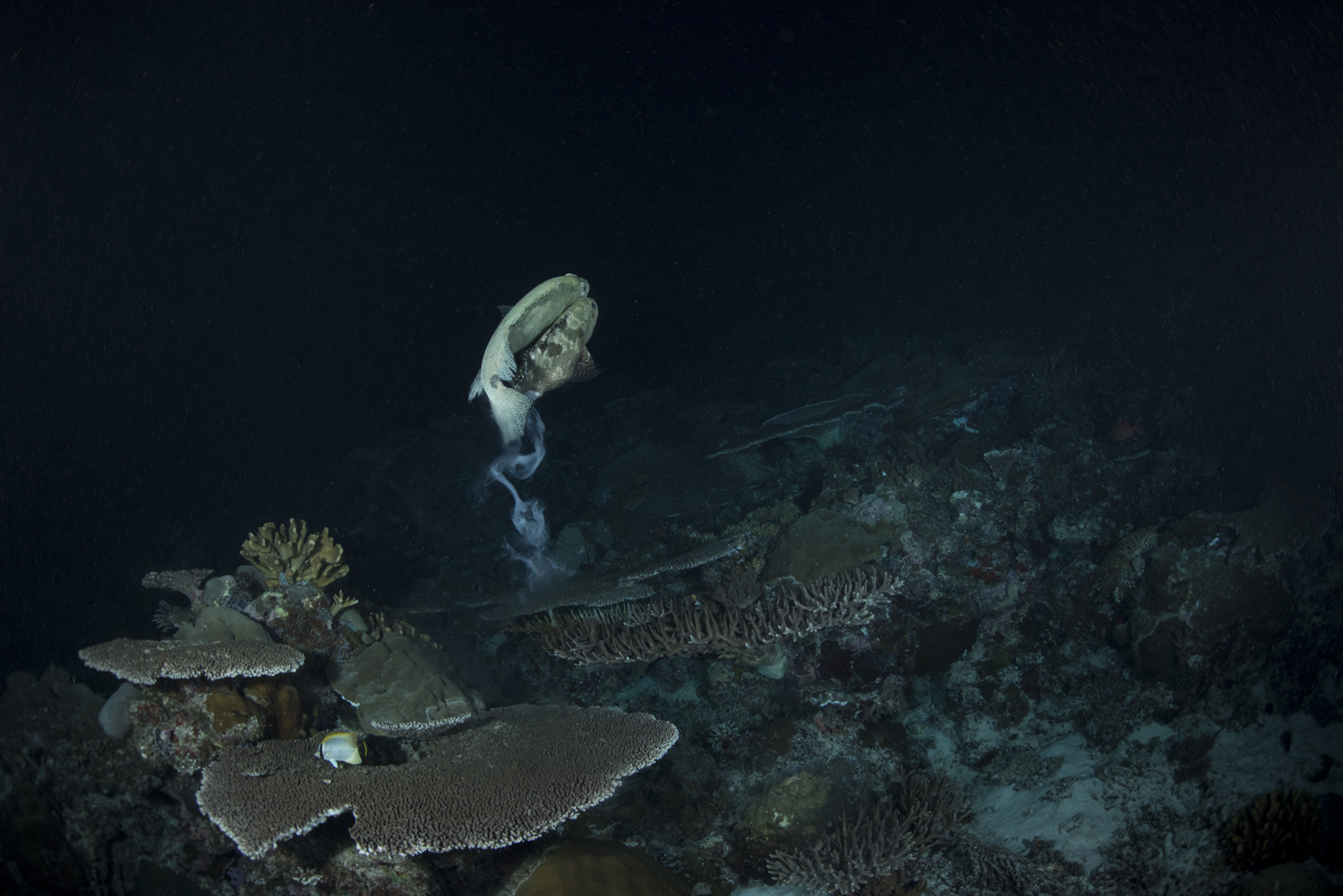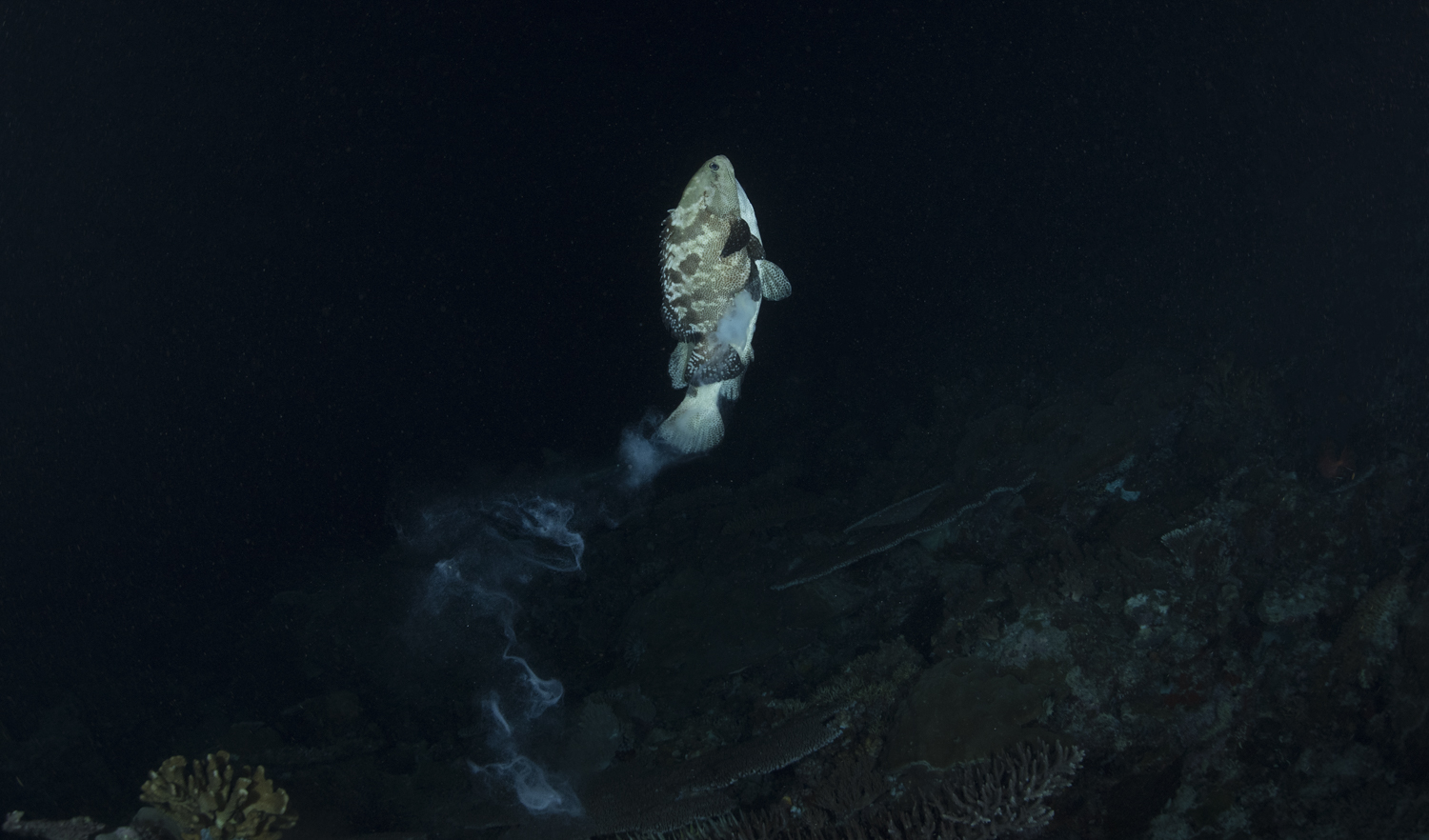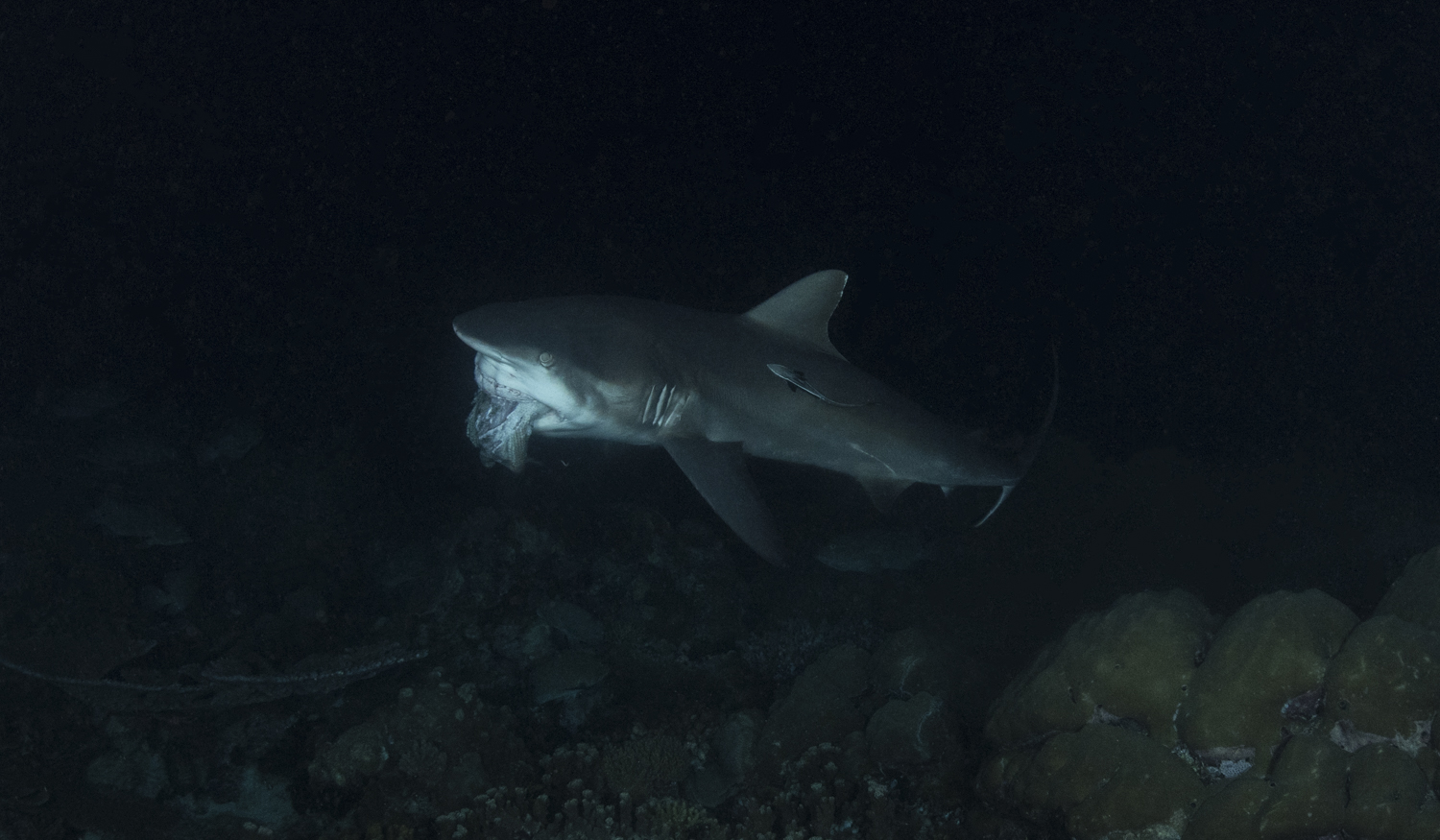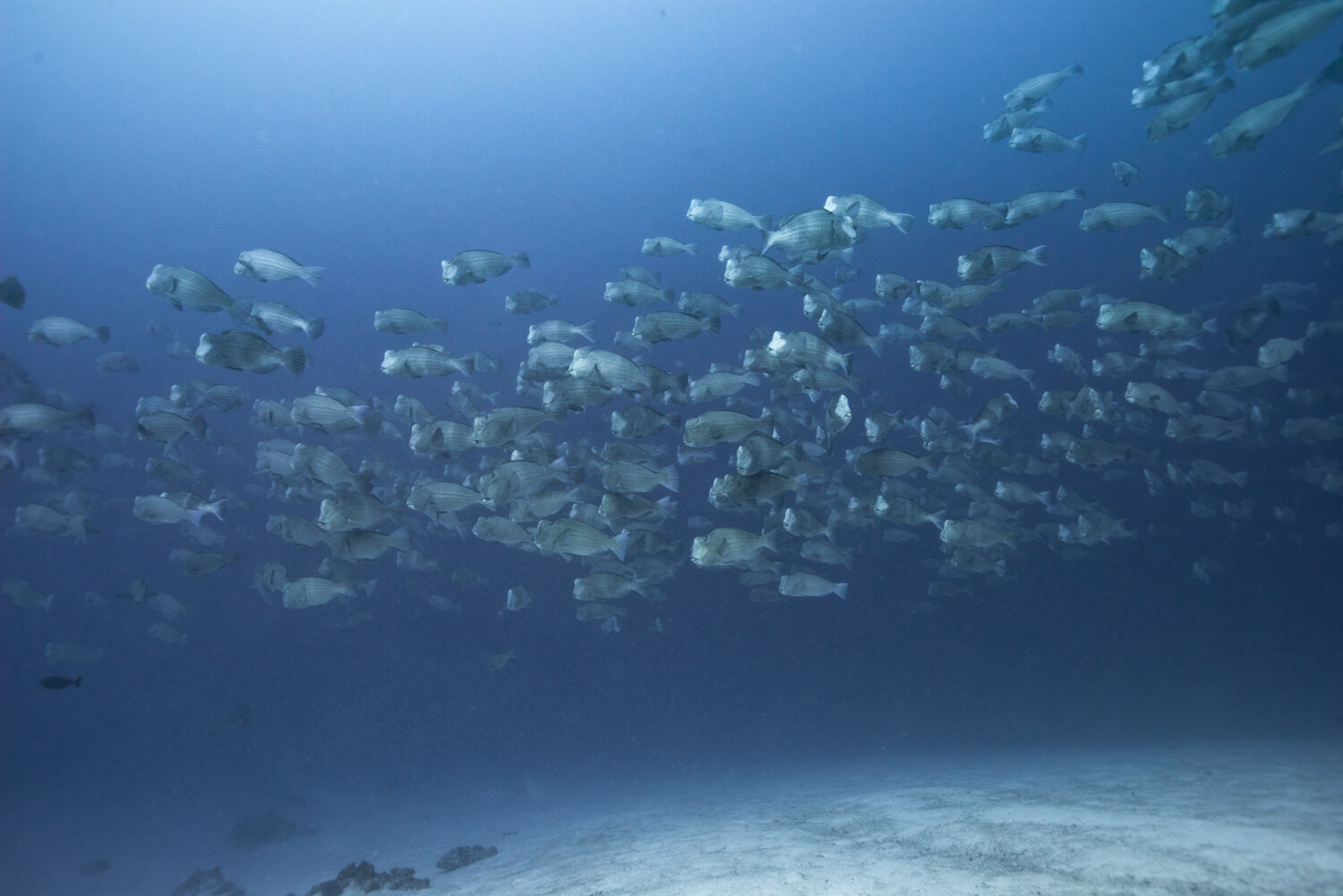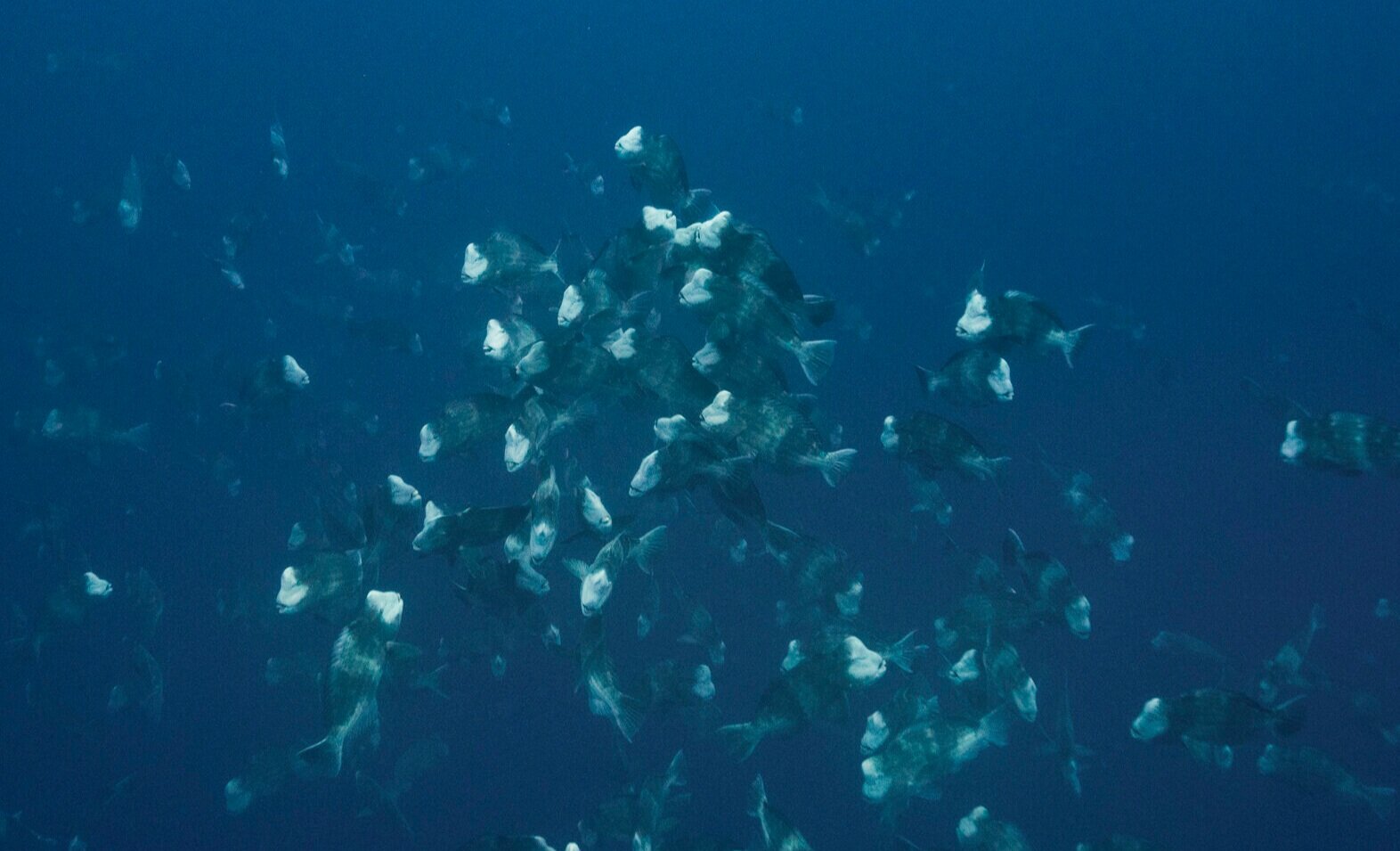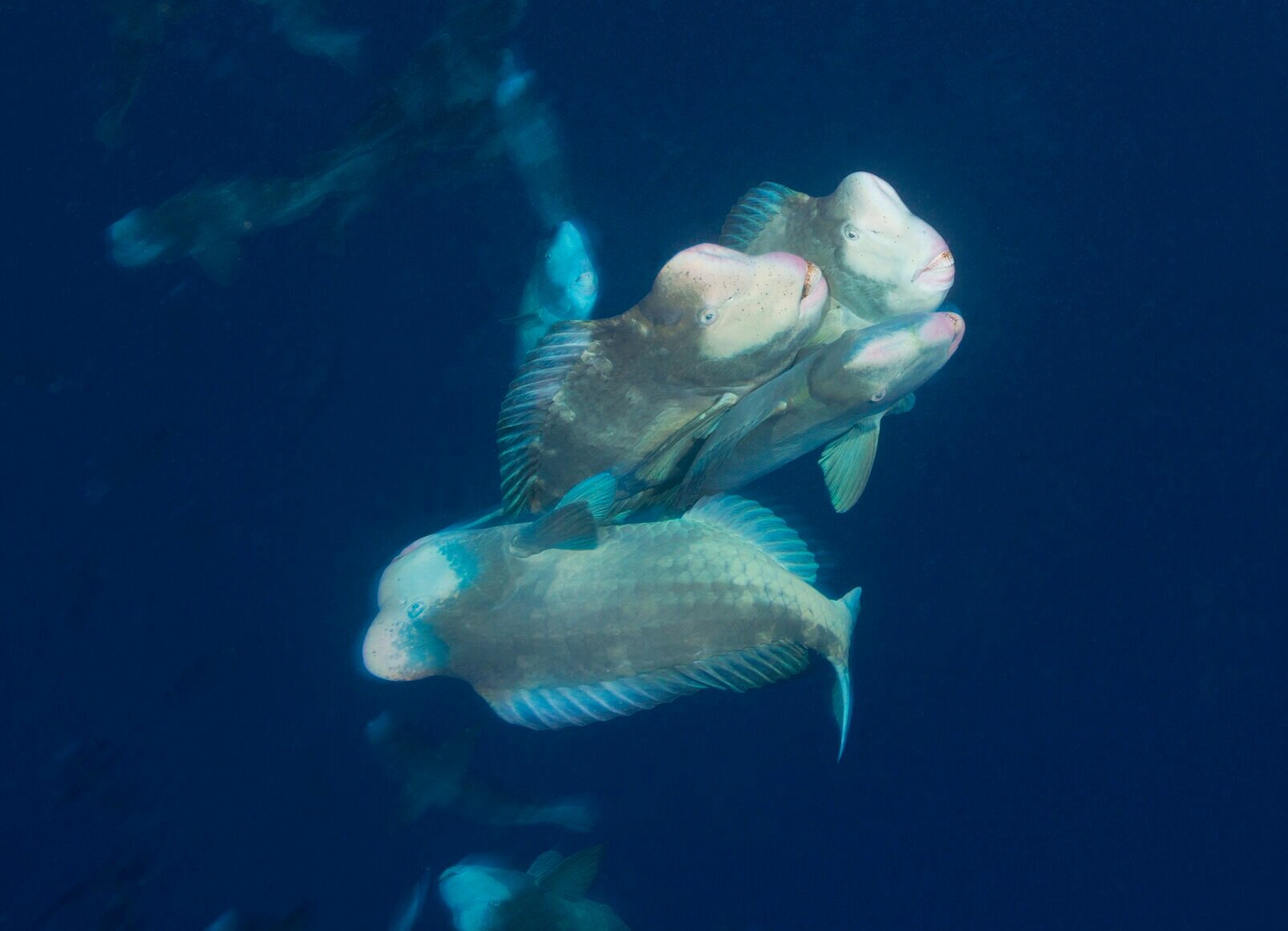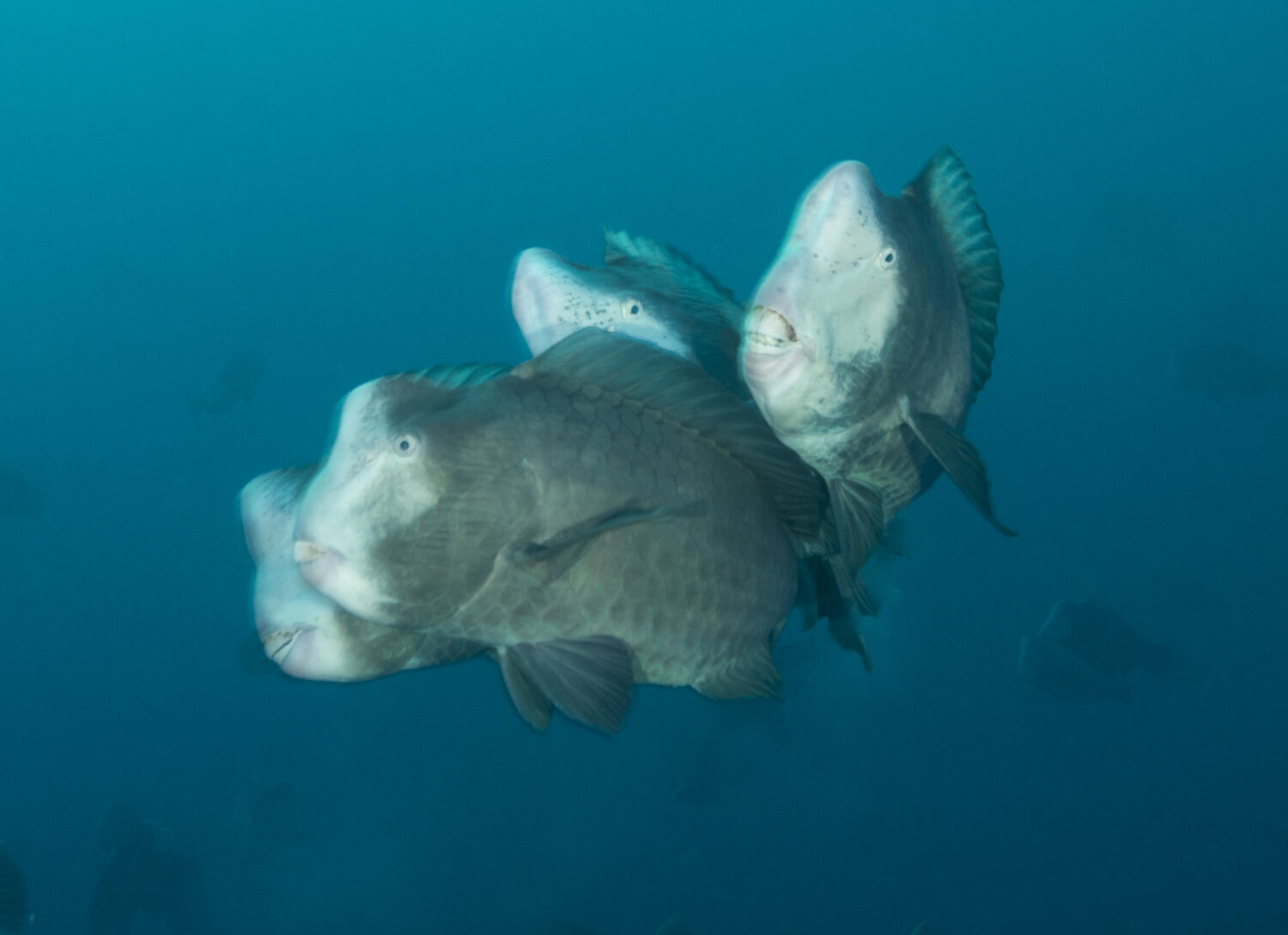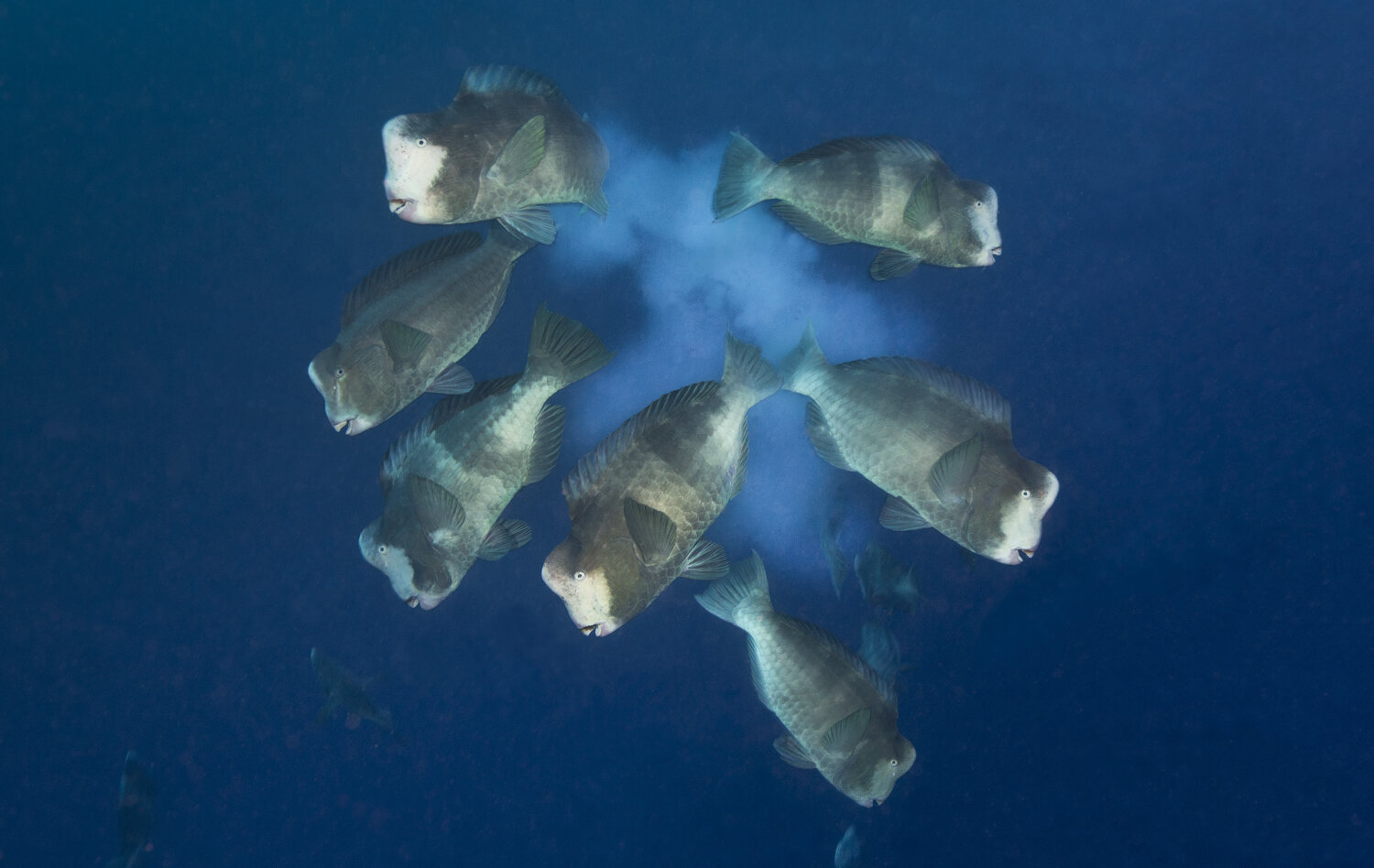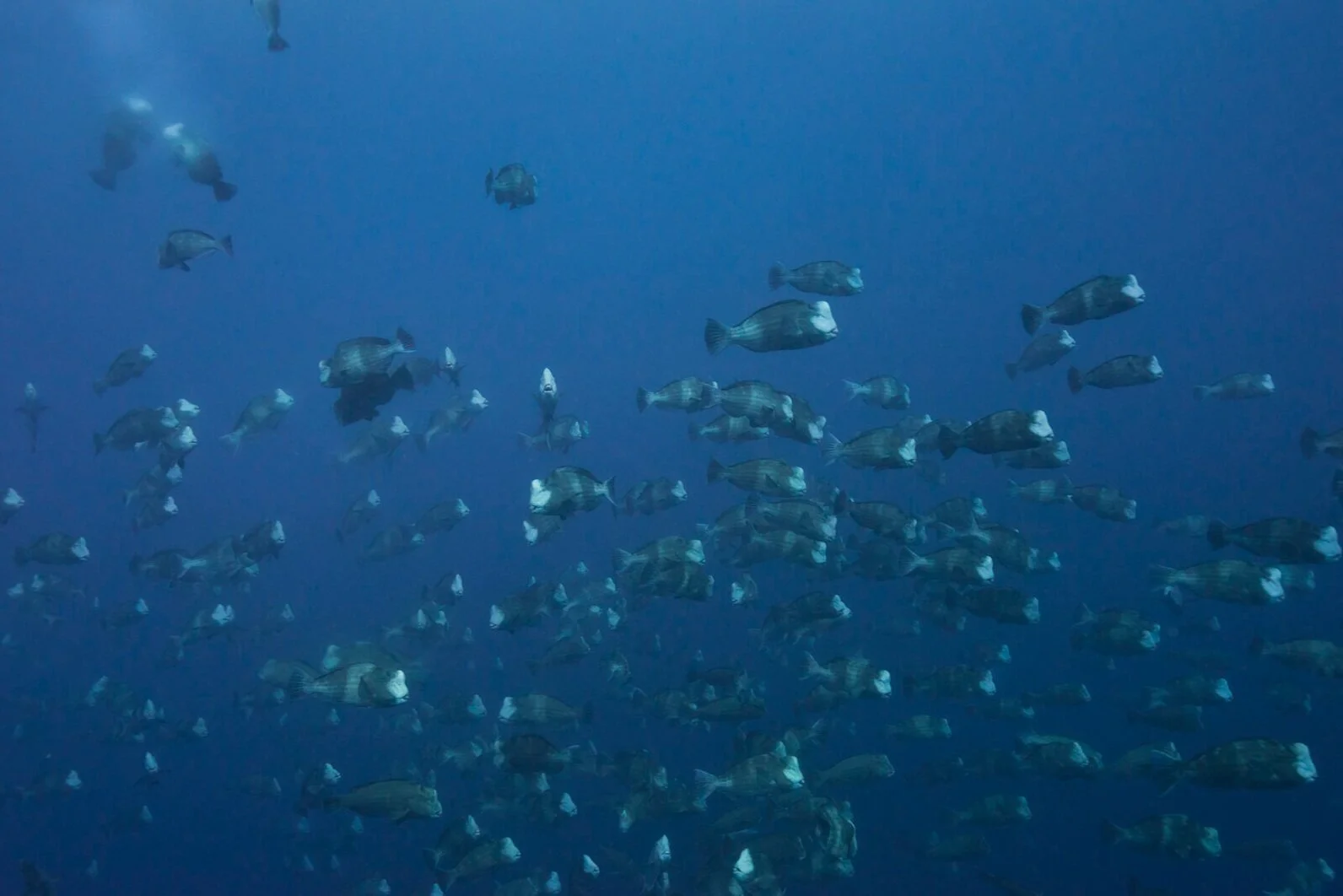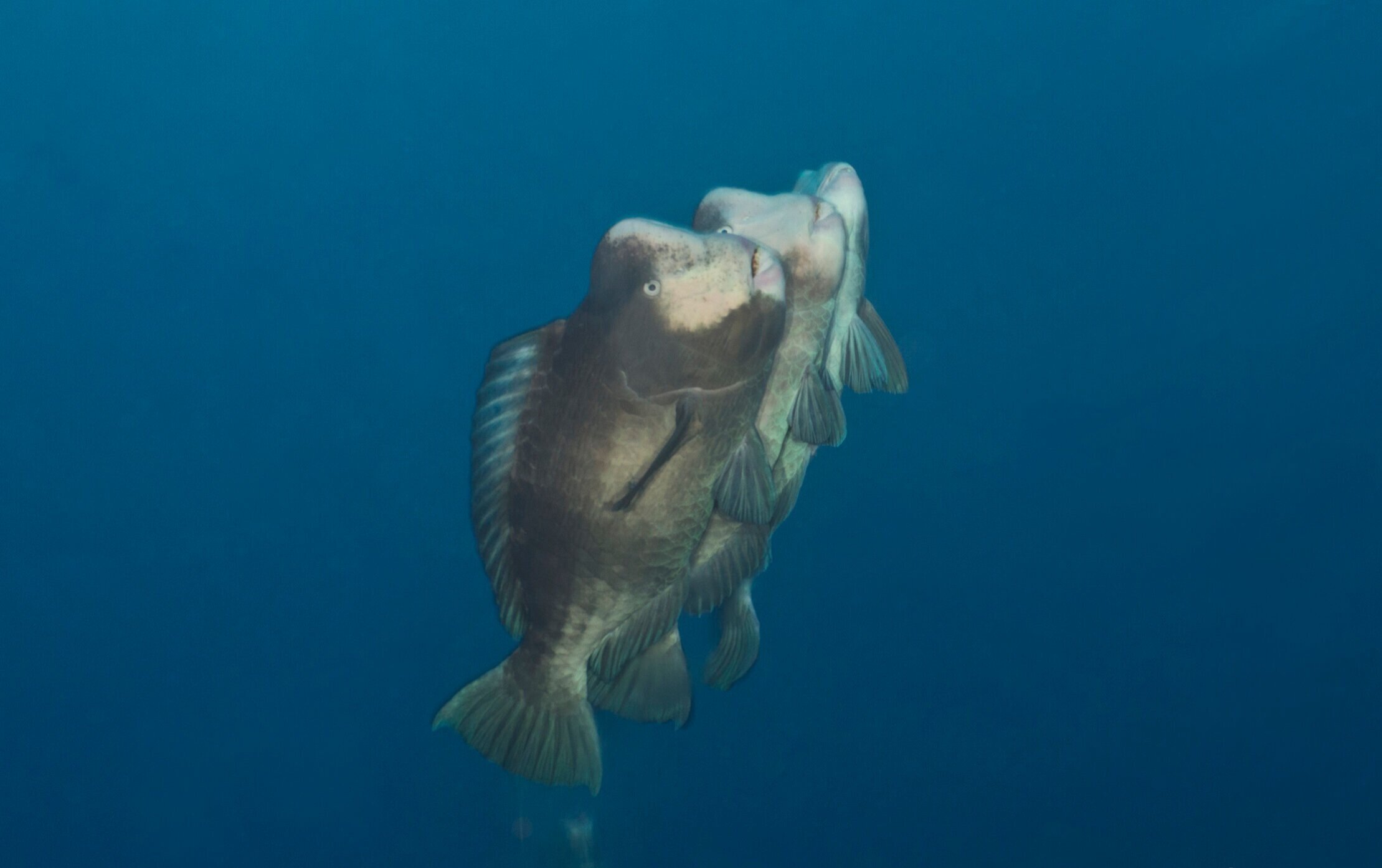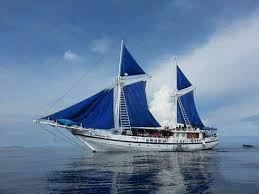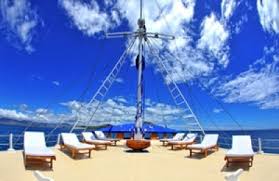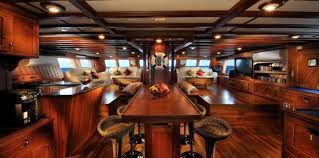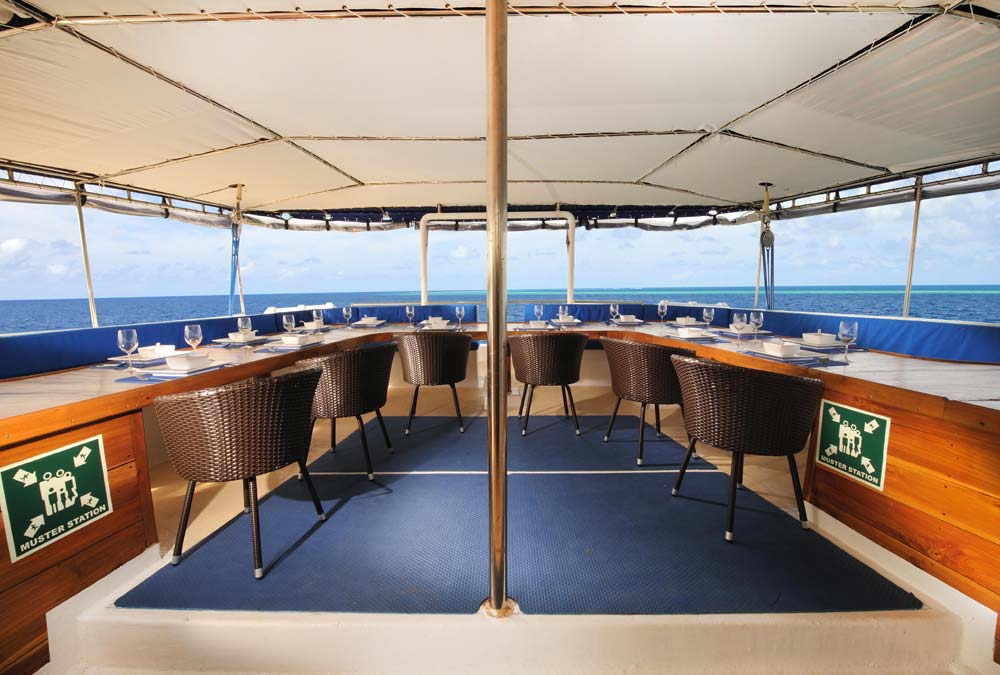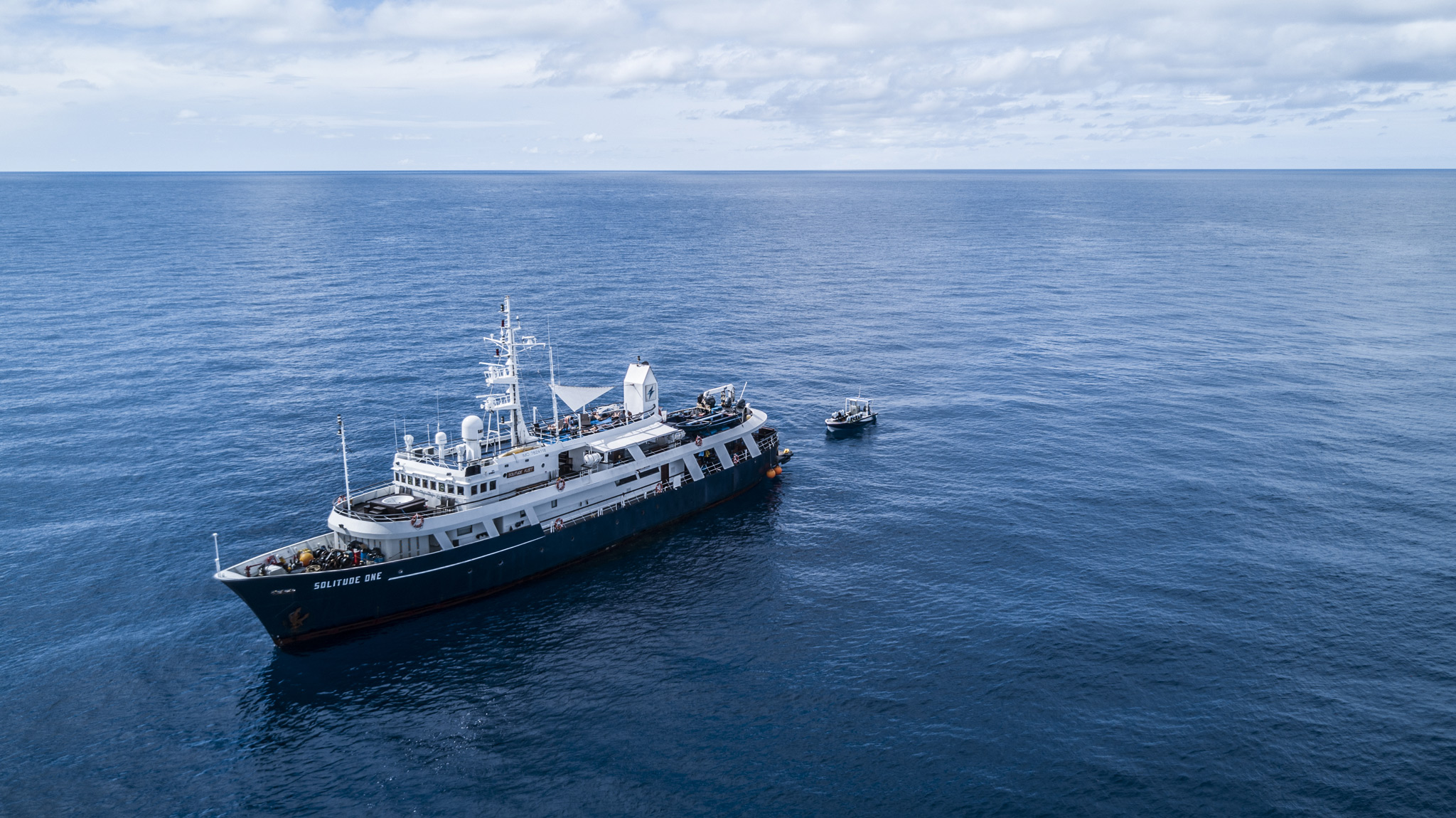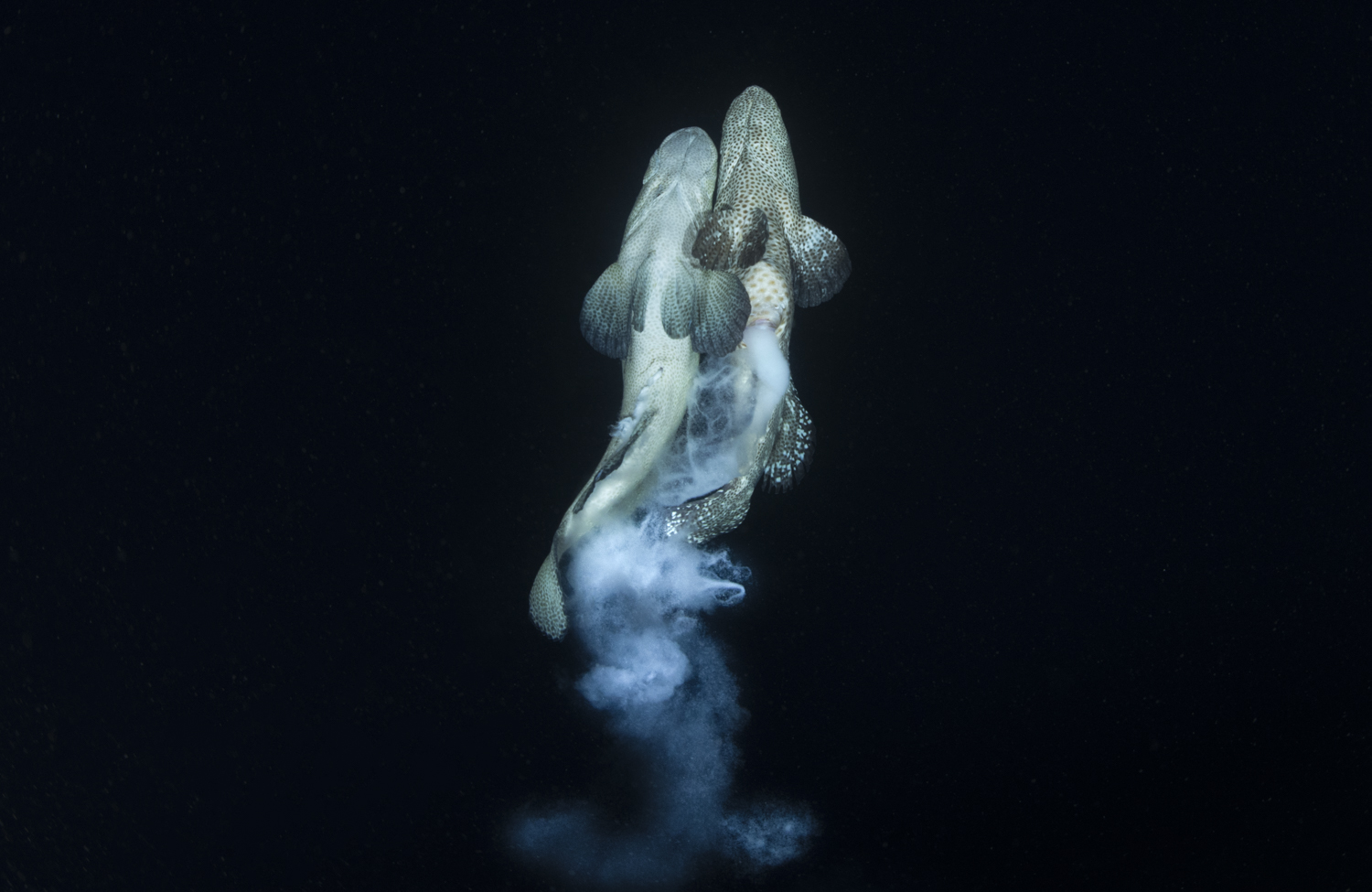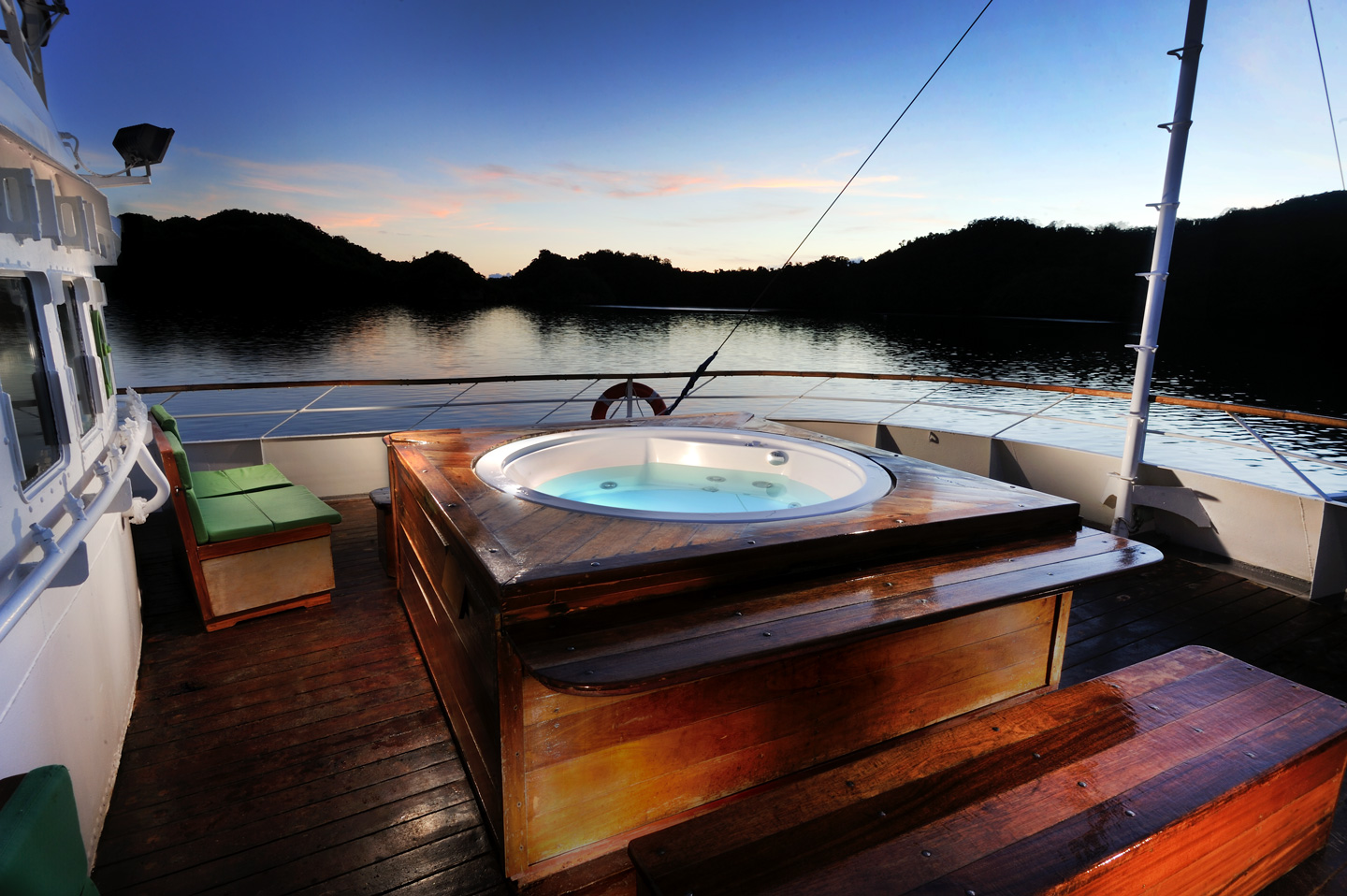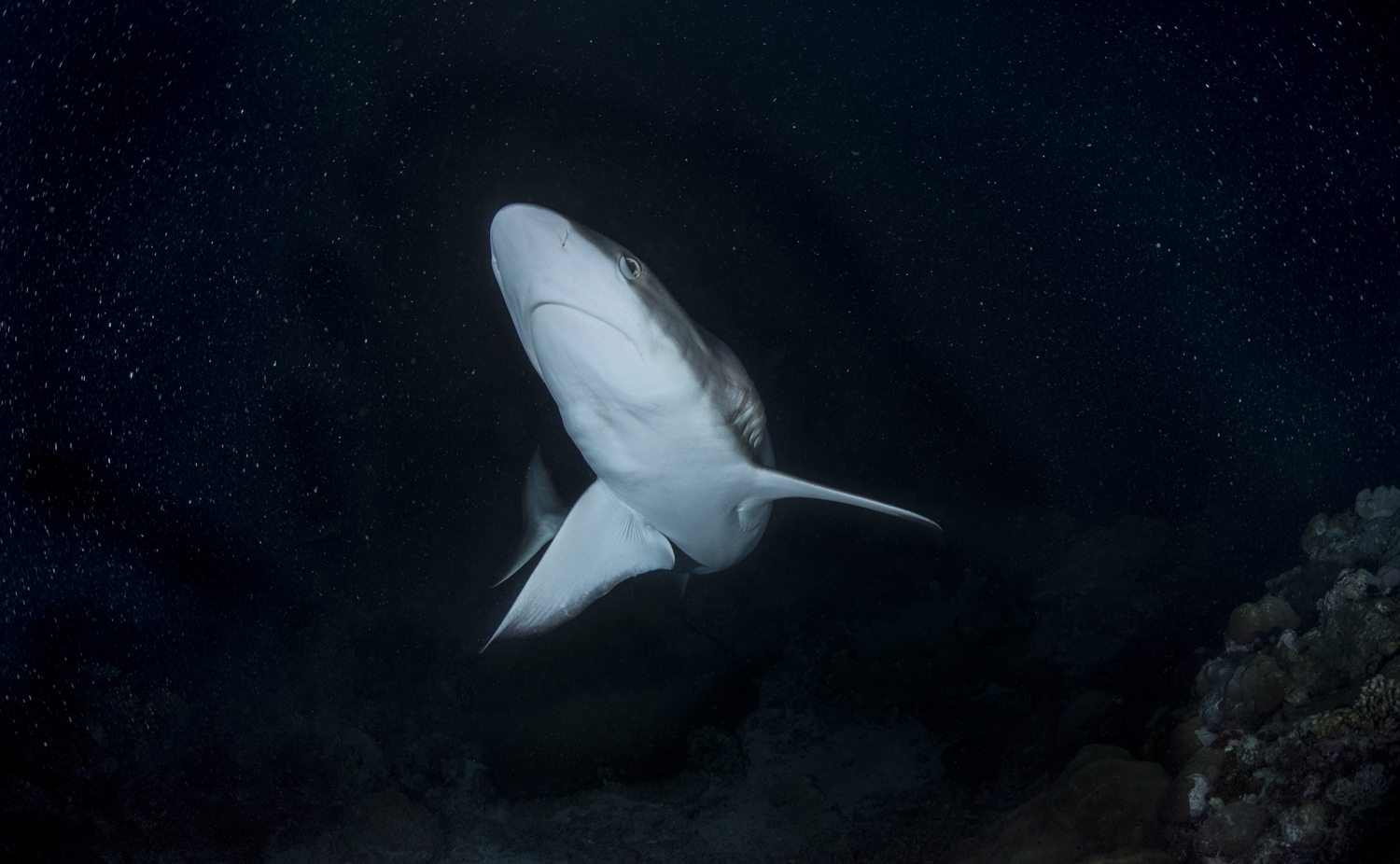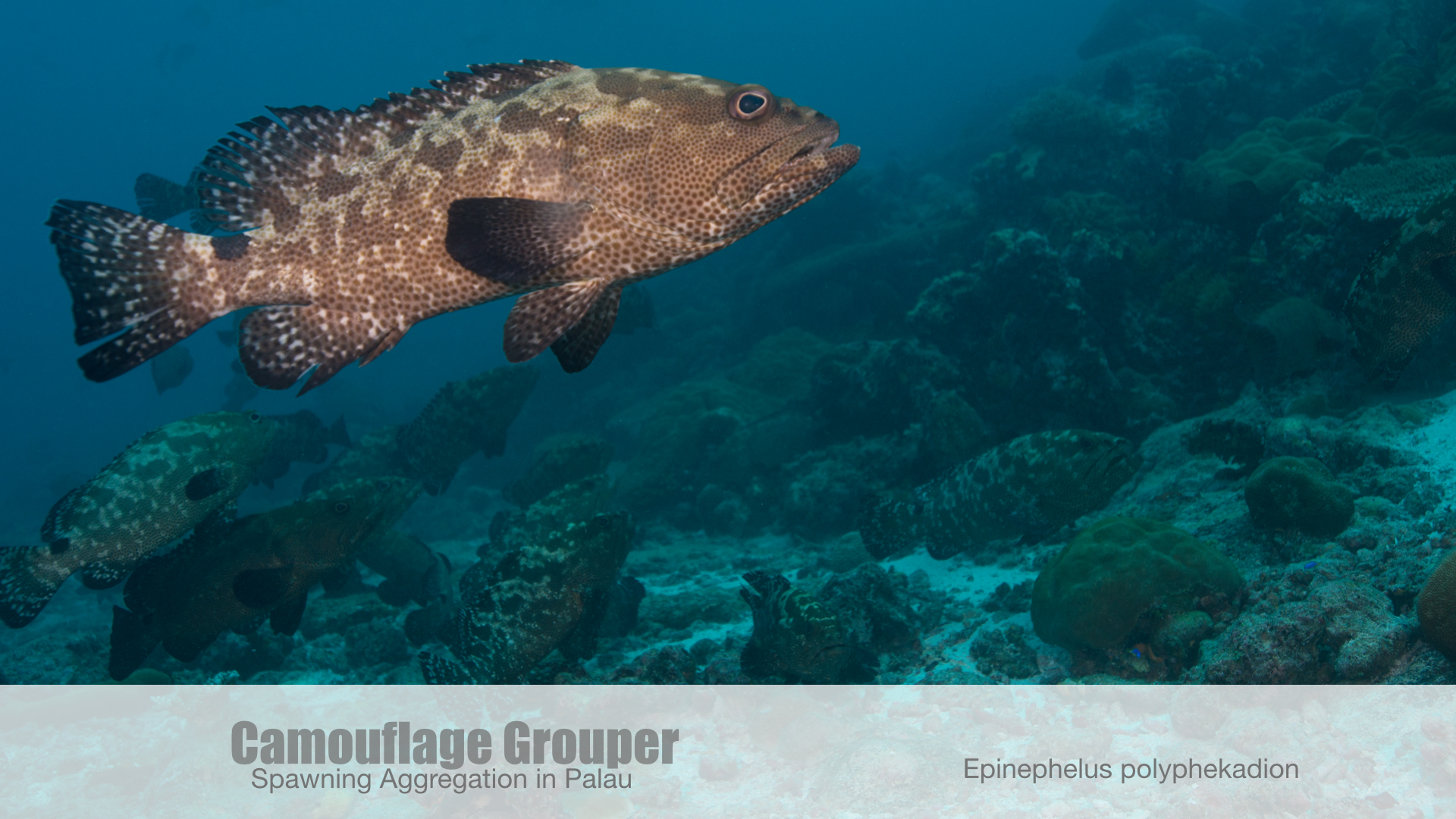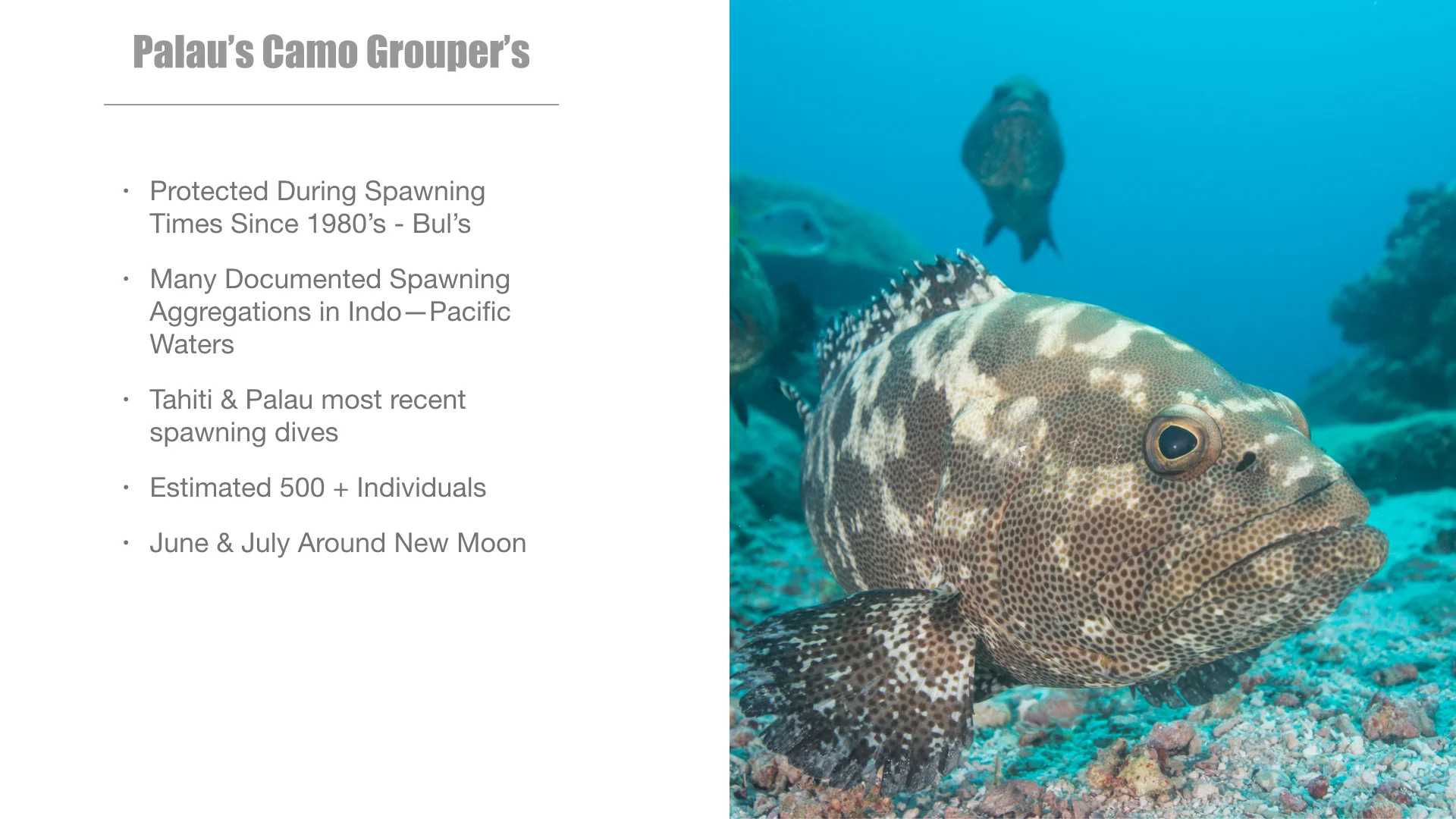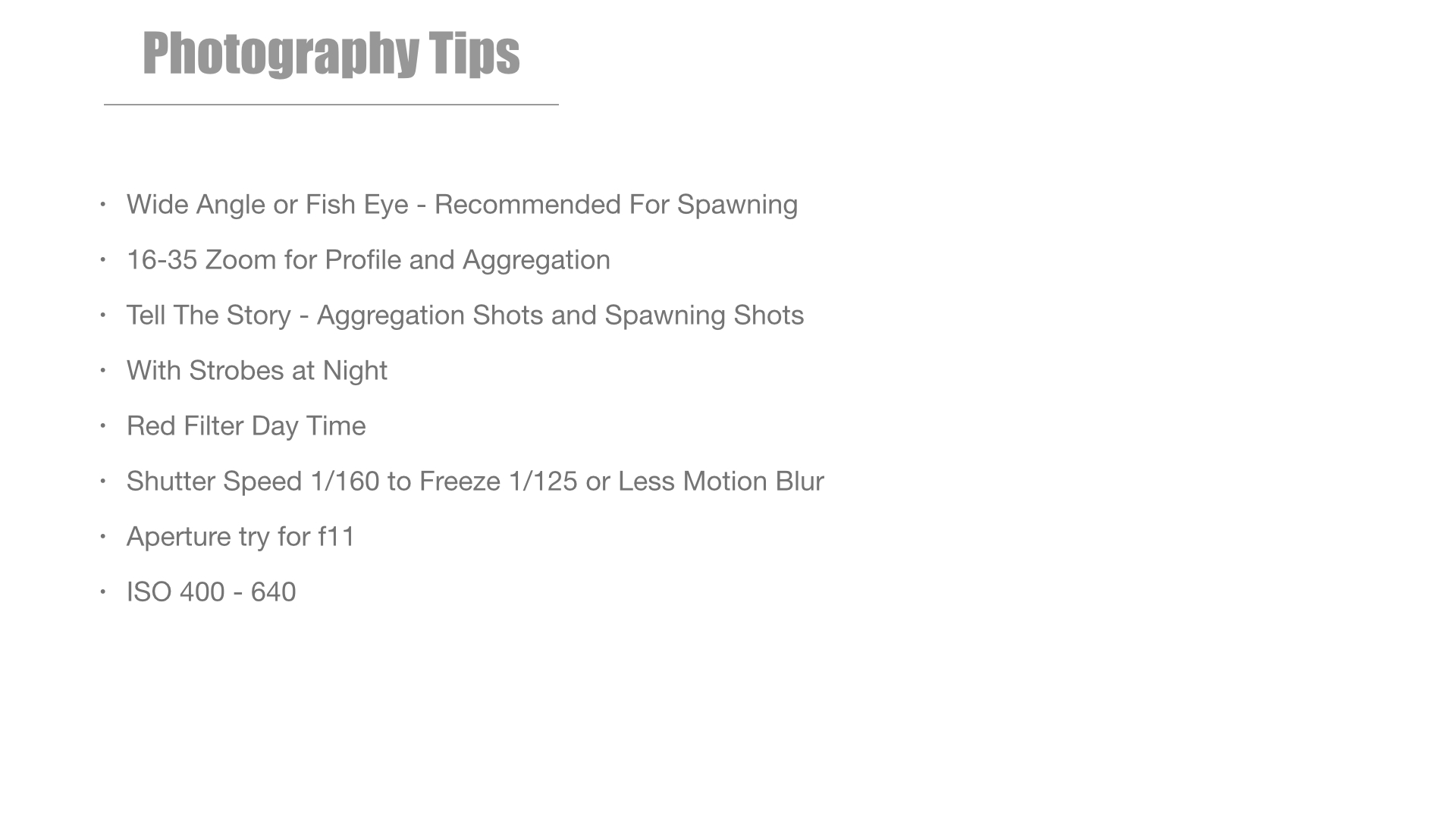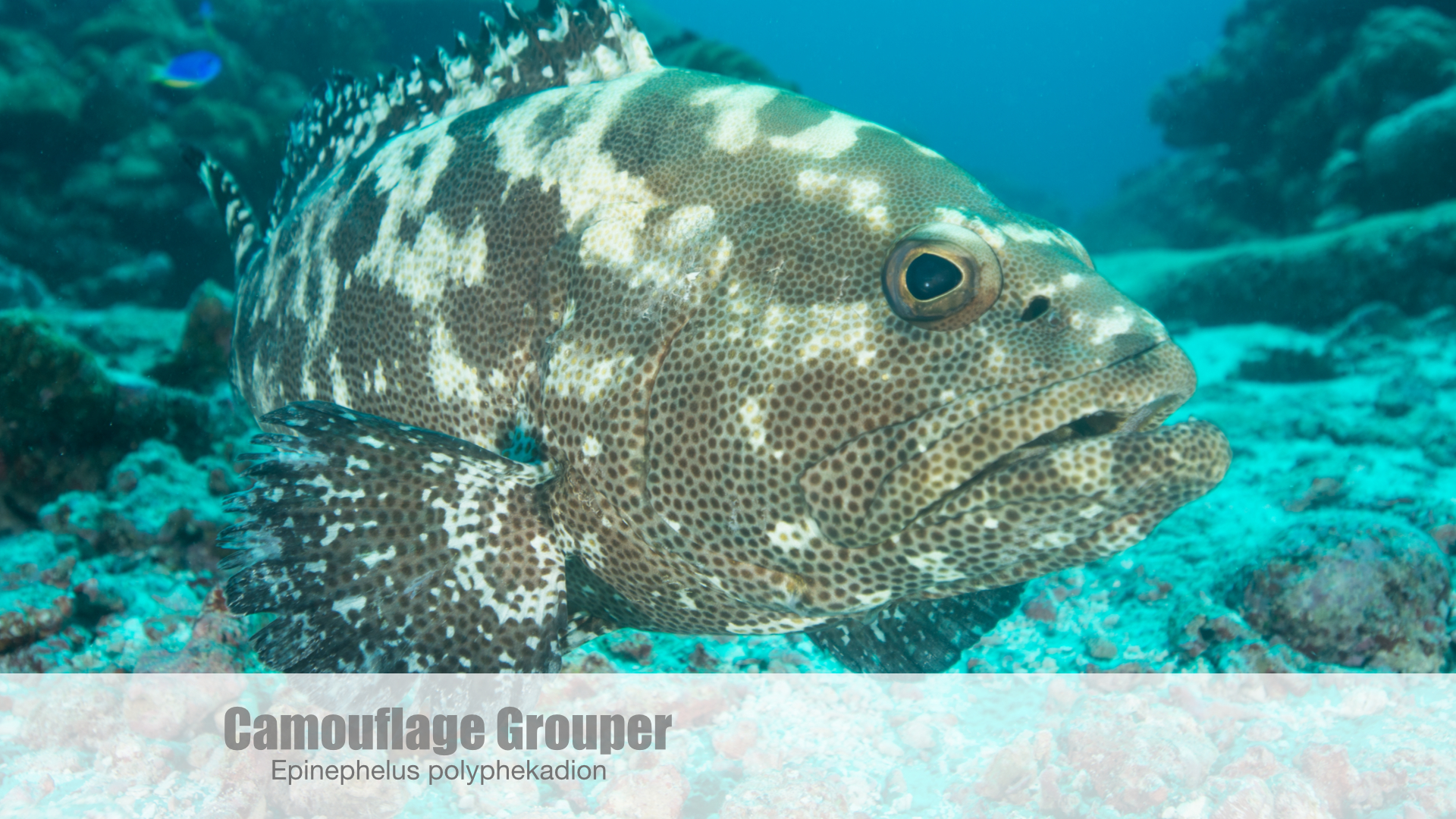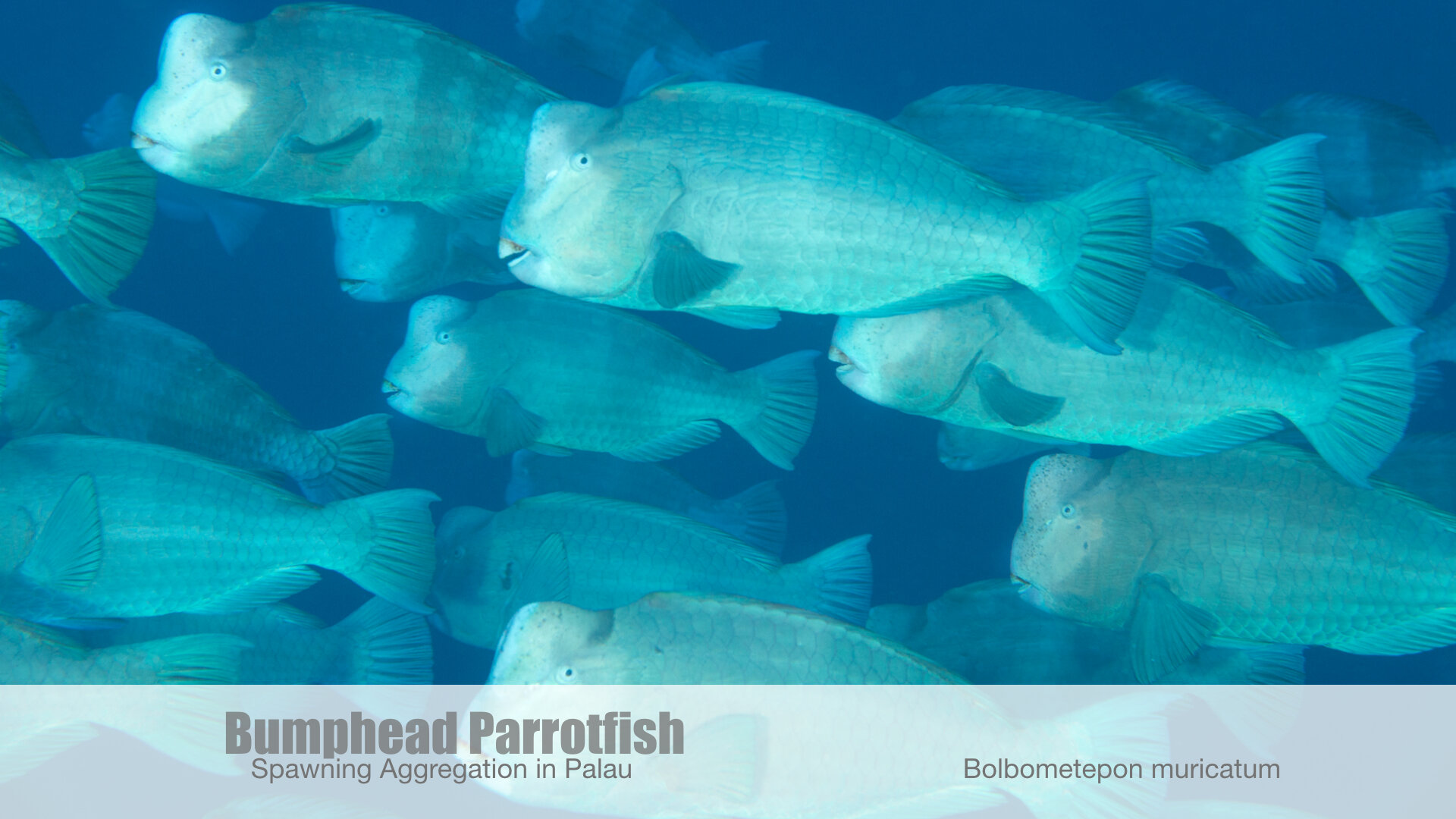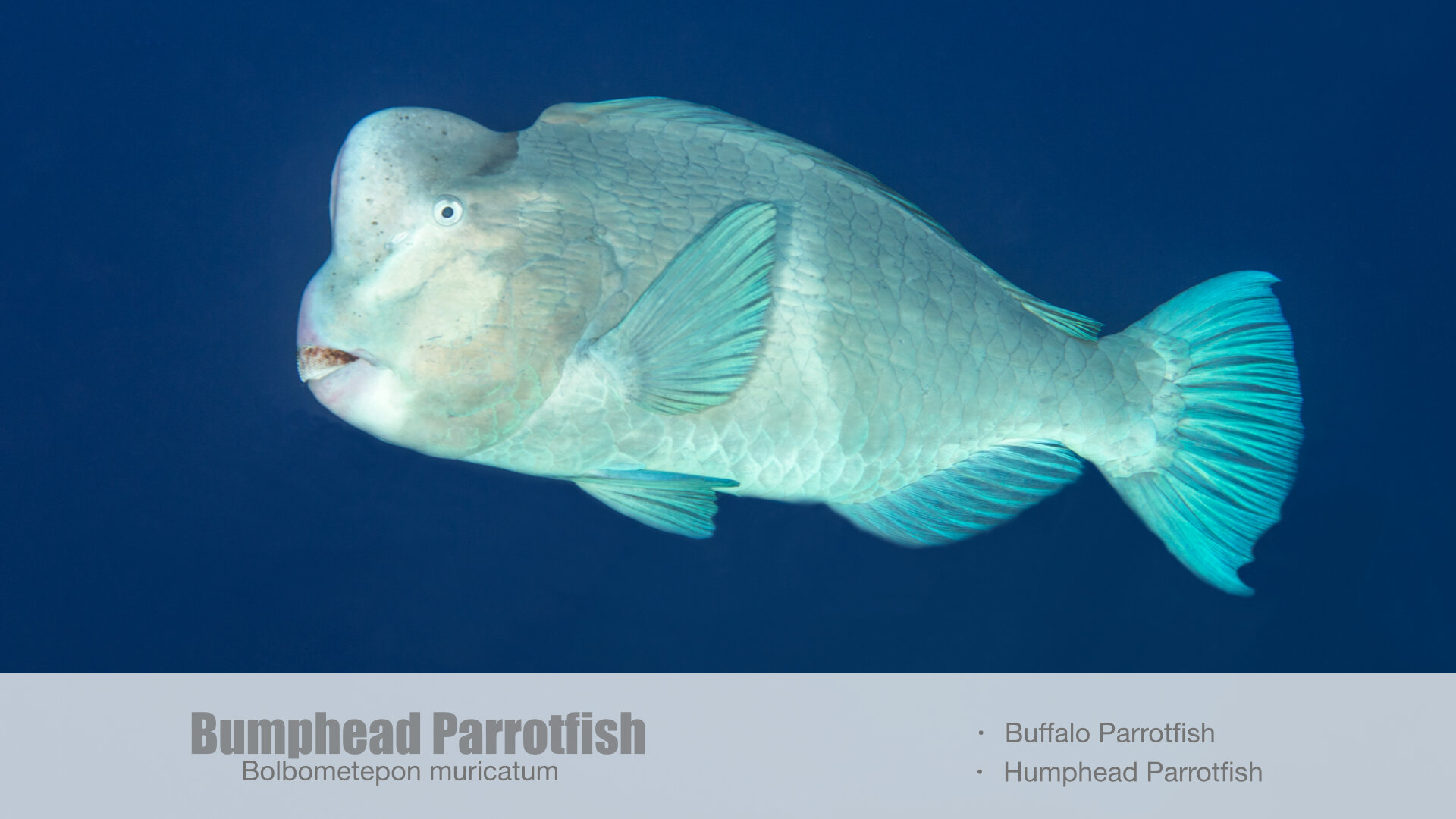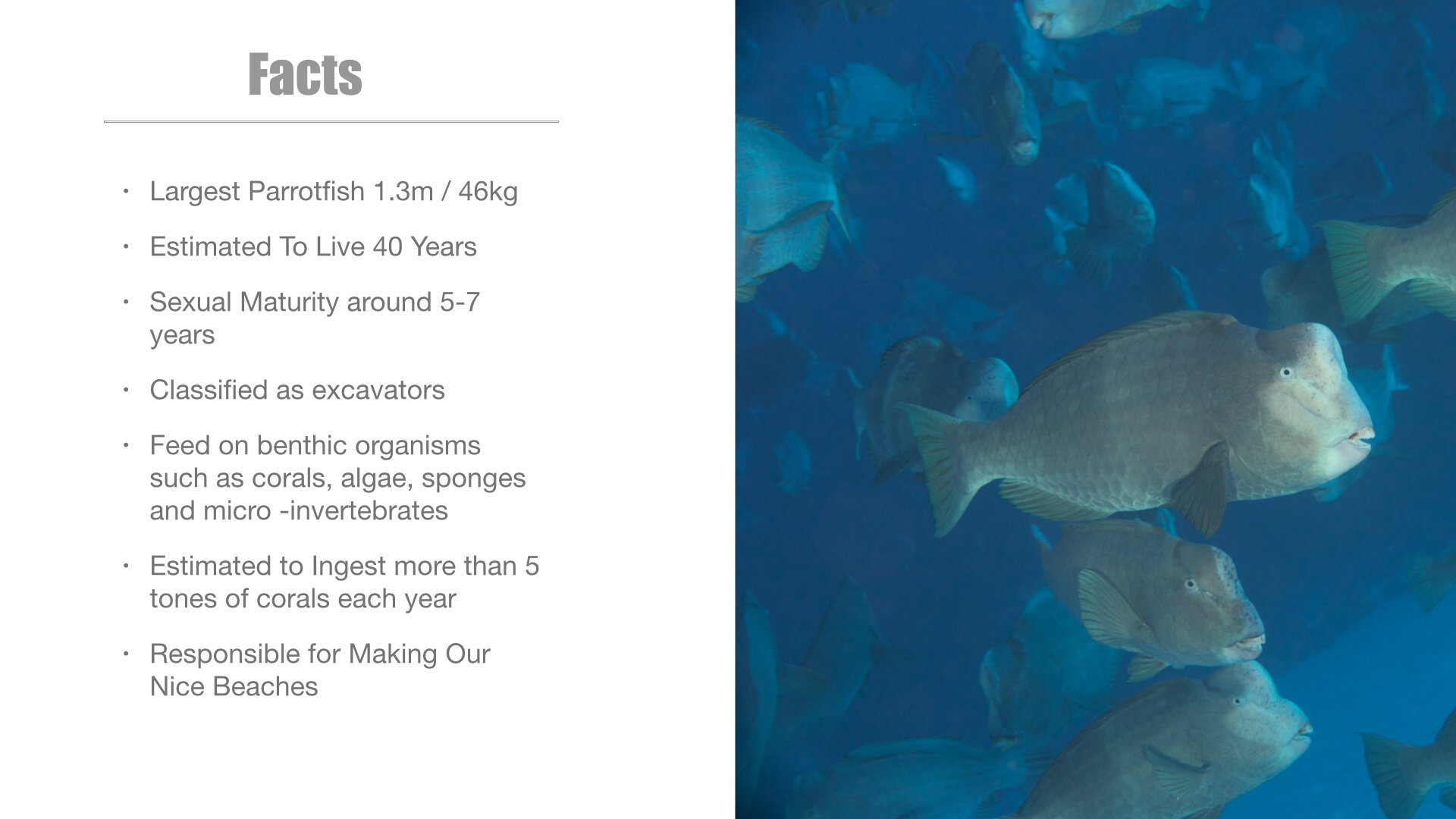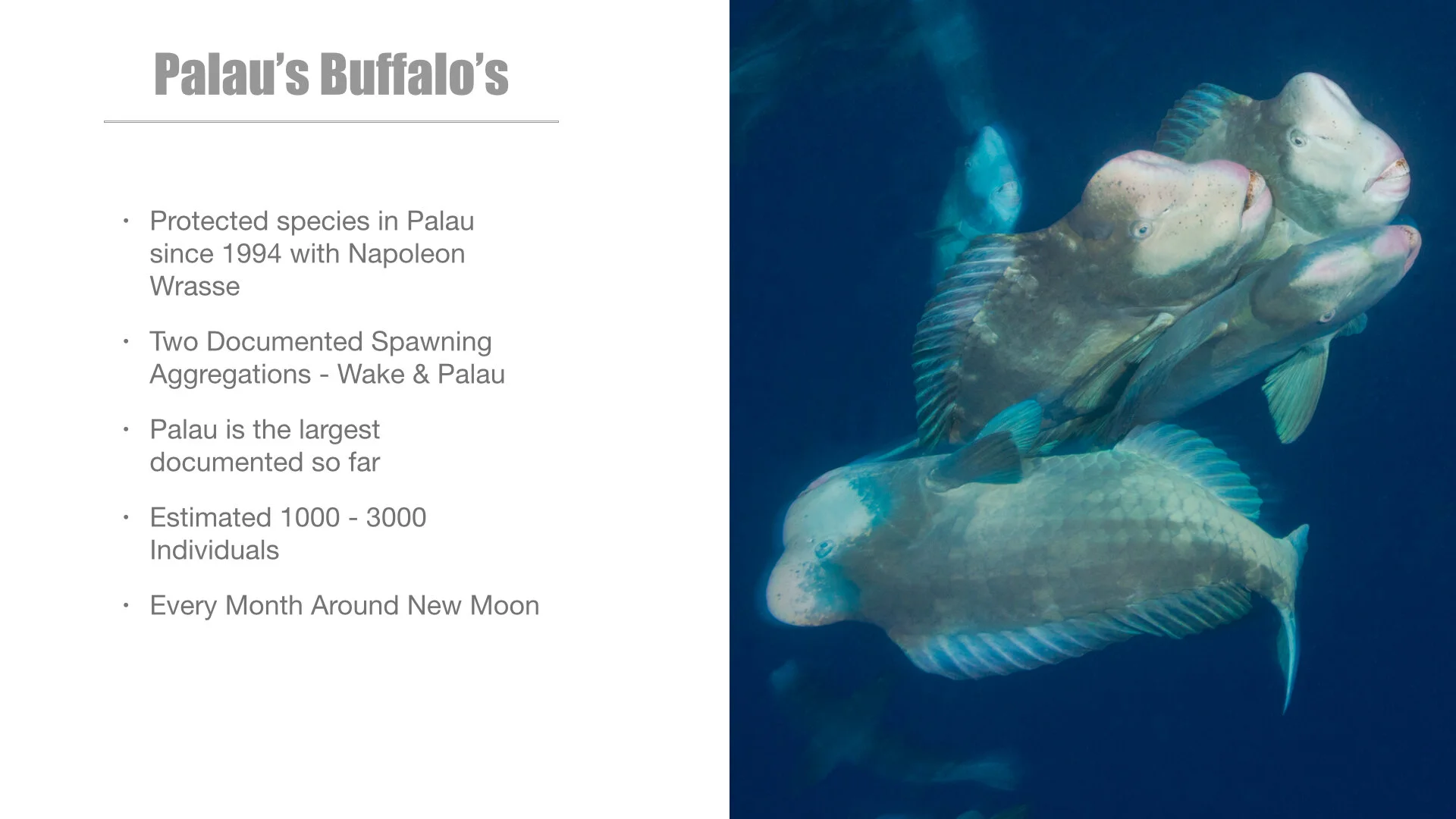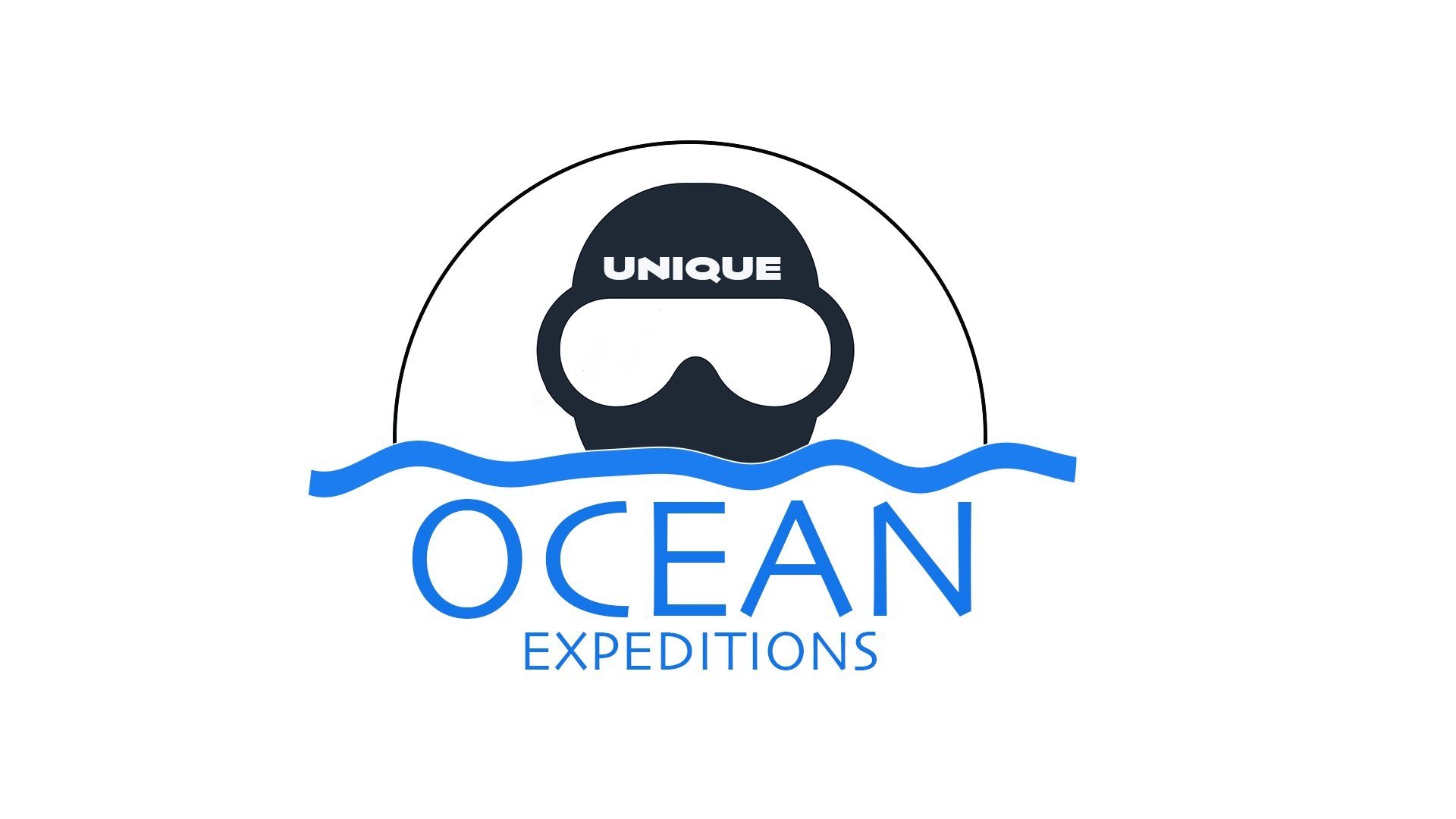PALAU
LIVEABOARD EXPEDITION
CAMOUFLAGE GROUPER COMBO
CAMOUFLAGE GROUPER AND BUMPHEAD PARROTFISH COMBO SPAWNING EXPEDITION DIVES
THE EXPEDITION
EXPERIENCE REQUIRED - ADVANCED OPEN WATER LEVEL WITH 50 DIVES MIN
This COMBO spawning expedition is a double spawning trip of the Camouflage Groupers and the Bumphead Parrotfish. This is a special spawning trip as it is only possible to do this expedition twice a year once in June and once in July. Both options of either a Live-aboard expedition or a Land-based expedition are possible. Early morning and late night dives are involved on this expedition.
The expedition will begin with the spawning of the bumphead parrotfish. This is the largest aggregation of bumphead parrotfish so far discovered on the planet, you can witness more than one thousand individual fish gather here for the purpose of spawning. In the late evenings we will begin watching the camouflage groupers spawning. Hundreds of groupers will start rising up from their hiding nests with males eagerly chasing them. Grey reef sharks and lemon sharks have also come here to try and feast on any unwitting spawning grouper. We sit and watch the show as groupers spawn in front of you with the sharks buzzing around.
After spawning is finished we continue diving the rest of Palau’s amazing reefs with manta rays, plenty of sharks, cavern’s, holes, swim throughs and jellyfish lake,.
PALAU
Most dive sites in Palau are world-class and unique, with underwater features like blue holes, drop-offs, caverns, caves and channels. Visibility often seems endless and can go up to 100ft (30m) on good days. For wreck dives nearer to Koror though, do expect only 15-45ft (5-15m) of visibility.
Palau can be dived year-round but it tends to rain frequently during July to October. Water temperature is usually warm at a range of 81-86°F (27-30°C) and a 3mm wetsuit will suffice. However during some months its possible to have cold thermoclines dropping down to 65-70F (23-26C). For Land-based divers most of the dive sites are located about 45-60 minutes away by speed boat from Koror with the key areas for diving concentrated around the islands of Ngemelis and Peleliu.
With the strong currents of the Pacific Ocean sweeping through Palau, most of the dive sites are recommended for divers with experience. A reef hook is critical to have for several dive sites at the outer walls of the barrier reef, especially at the world-famous Blue Corner.
Shipwreck enthusiast will be spoilt for choice in Palau as there are many sunken remnants around Koror from World War II. Many are easily accessible and intact, and divers can take their pick from cargo ships, transport vessels, navy destroyers and Japanese Zero planes.
CAMOUFLAGE GROUPERS
Leading up to the new moon tens of hundreds of Camouflage Groupers (Epinephelus polyphekadion) are gathering around Palau’s channels preparing to spawn.
We begin our expedition before the new moon diving some of the big name sites with currents in preparation for the main event. These dives are late night dives, as the sun sets, we will begin the dive to watch the spectacle that is about to unfold.
A huge aggregation of groupers will rise from their hiding places, to ensure the continuation of their species. Witnessing this natural behavior--which only can be described as an underwater firework display of energy and excitement--also attracts the biggest predators in Palau such as Bull sharks and Oceanic blacktips, lemon sharks and grey reefs.
BUMPHEAD PARROTFISH
Leading up to the new moon hundreds of Bumphead Parrotfish (Bolbometepon muricatum) are gathering around Palau’s outer reefs and channels preparing to spawn. We begin our expedition before the new moon diving some of the big name sites with currents in preparation for the main event.
These dives are early morning starts, as the sun rises, we will begin the dive to watch as the spectacle unfolds. A huge aggregation of Bumphead parrotfish will spill from the lagoon into the dive site like a waterfall, to ensure the continuation of their species.
Witnessing this natural behavior--which only can be described as some kind of majestic dance is a must see.
PALAU SIREN - LIVEABOARD
LIVEABOARD
ALL LIVE-ABOARD RATES ARE BASED ON PER PERSON.
ALL DATES
NEW MOON GROUPER & BUMPHEAD COMBO EXPEDITIONS
PALAU SIREN LIVEABOARD
2027 AVAILABLE DATES
2028 AVAILABLE DATES
PALAU LOCATION
PALAU SIREN ITINERARY
PRICE BREAKDOWN
INCLUDES
10 Days of Diving
All meals - Liveaboard Only
Transport to and from Diving Shop
Airport Transfers
EXCLUDES
International & Domestic Flight
Park Permits
Gratuities
Rental and Dive Gears
DIVE INFORMATION
WATER TEMPERATURE - 27c / 85F
WETSUIT - 3mm / 5mm
Blue Corner, one of Palau's most magical dives, is known for its sheer abundance of underwater life and reef configuration – the corner sticks out into the open ocean and then drops to the depths. Divers are dazzled by the incredible variety of fish, including barracudas, jacks, Napoleon wrasses and schooling grey reef sharks. Strong tidal currents render it a dive for the more experienced – a reef hook is a must to remain stationary in the current.
Blue Holes, may well be Palau's most scenic dive. It features four vertical shafts that open on the top of the reef and descend to a large cavern that exits on the outer wall at about 25m. Drifting down the shafts is a delight, especially when the sun is high. Dancing rays of sunlight flood through these openings and play with the blue hues. Schools of fish patrol the huge bottom exit, with dark blue ambient light as a background.
German Channel, Given the right set of circumstances, a dive at German Channel can be an unforgettable experience. Manta rays regularly visit this channel, which was blasted by the Germans to ease boat passage during their 1899 to 1914 Palau occupation. The mouth of the channel features some nice sandy areas with small cleaning stations, where mantas (usually two to five individuals) come to have parasites removed by little cleaner wrasses in less than 20m of water.
Peleliu Island, If you'd like to temporarily escape the relative hustle and bustle of the capital, the small coral island of Peleliu, in the south of the archipelago, offers a tranquil option. There's only one village – Klouklubed – and often it will seem like you've got the entire island all to yourself. The diving here is concentrated around the south East tip of the Island. Deep walls, strong currents and an abundance of fish life make this one of Palaus best dive locations.
Ulong Channel, is one of most thrilling dives in Palau. Divers start at the mouth of the channel, which consistently sizzles with fish action. Divers usually hook themselves to the reef to see hunting grey and whitetip sharks, jacks, barracudas and groupers, before drifting with the current along the channel. The seascape is incredibly scenic: the sea floor is carved by large parallel-running white-sand valleys, bounded by healthy coral formations and dotted with massive sections of sprawling lettuce corals.
Siaes Corner, When the tide is running and the month is right you can see more than 300 grey reef sharks here. Siaes Corner is a current-swept point that plunges vertically to about 50m. After jumping in the water, divers drift along the wall to the corner. As you reach the corner, you attach your hook to a dead coral to watch for electric fish action, which usually includes grey sharks, blackbar barracudas, jacks, bumphead parrotfish, anthias and fusiliers.
Shark City, is the outer most promentory in Ulong and sometimes one of the best dives in Palau. Conditions are similar to Peleliu with strong current and action dives along with high rewards such as bull sharks, oceanic blacktips and pelagic encounters. The corals and reef life is also spectacular.
SPAWNING DIVE INFORMATION
LATE NIGHT DIVES
POTENTIAL CURRENT DIVES
The yearly aggregation of camouflage grouper (Epinephelus polyphekadion) has been known for many decades in Palau. Scientists have come and gone since the late 70’s observing their patterns and protecting them and their vulnerable spawning sites around the islands during the months of June through to August. Since then no-one had witnessed or at least not documented any spawning style, timing or pattern in Palau until 2015 when Unique Dive Expeditions crew slowly put all the pieces of the puzzle together.
over the last six years spent large periods of time watching and observing the camouflage grouper fighting for territory, displaying sexual dimorphism (color change) but we had not witnessed spawning and neither had anyone else in Palau. We wanted to put that final piece of the puzzle to rest and so sat painfully at times watching and waiting each year passing by as their short window came and went.As the fish only stayed at the site for a limited period of time, each year we would slowly tick off all the possible combinations of tide, moon and time until one day it all fitted together. We were not honestly expecting the camouflaged grouper (Epinephelus polyphekadion) spawning to be such a spectacle. Our other spawning expeditions of snappers (Lutjanus bohar) and bumphead parrotfish (Bolbometepon muricatum) had close to guarantee bullsharks (Carcharhinus leucas) and oceanic blacktip sharks (Carcharhinus limbatus) during spawning time and that we thought was going to be hard to beat.
During the daytime we only saw a handful of sharks around this aggregation. A few whitetip reef sharks (Triaenodon obesus) and grey reef sharks (Carcharhinus amblyrhynchos) here and there but nothing to make you really excited and so our expectation levels were low on shark predation.As night fell everything was about to change, large sickle-fin lemon sharks (Negaprion acutidens), which I had only seen a handful of times in Palau begin to appear. These quite large, agile for their size shark, seek out the grouper using their sensors at night. Any fish that moves is a target so the groupers only defense is by lying completely still under the corals. As the spawning time approaches more species of sharks begin to appear, grey reefs (Carcharhinus amblyrhynchos) and oceanic blacktip sharks (Carcharhinus limbatus) lurk through the night.
.As the spawning erupts our patient waiting is over and some of the questions we have been wondering our answered. Males push out their females that they have been protecting from their night time holes for several days, both rising to the surface spiraling like a mini tornado as they release their gametes.Oceanic blacktips (Carcharhinus limbatus) and grey reefs (Carcharhinus amblyrhynchos) buzz through your lights trying to pick off the grouper as they spawn in front of you, their silhouettes lit up by our lights. The expedition we thought might not be so interesting turned out to be our most fascinating.
PRESENTATIONS
During your stay with us your Expedition Leader and Location Expert will be working together delivering you in depth presentations regarding the biology of what we are witnessing. These presentations have taken years to formulate and develop and what makes part of our collaboration with Unique Dive Expeditions so special.
